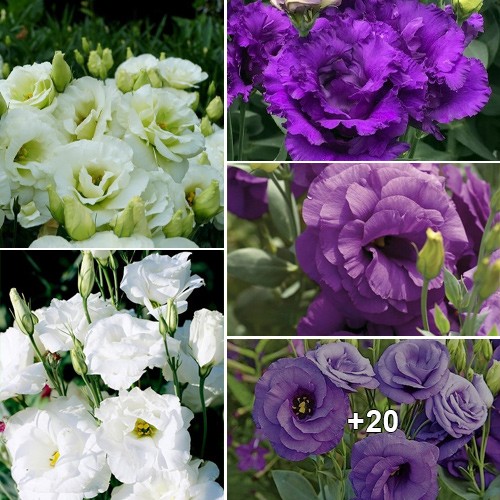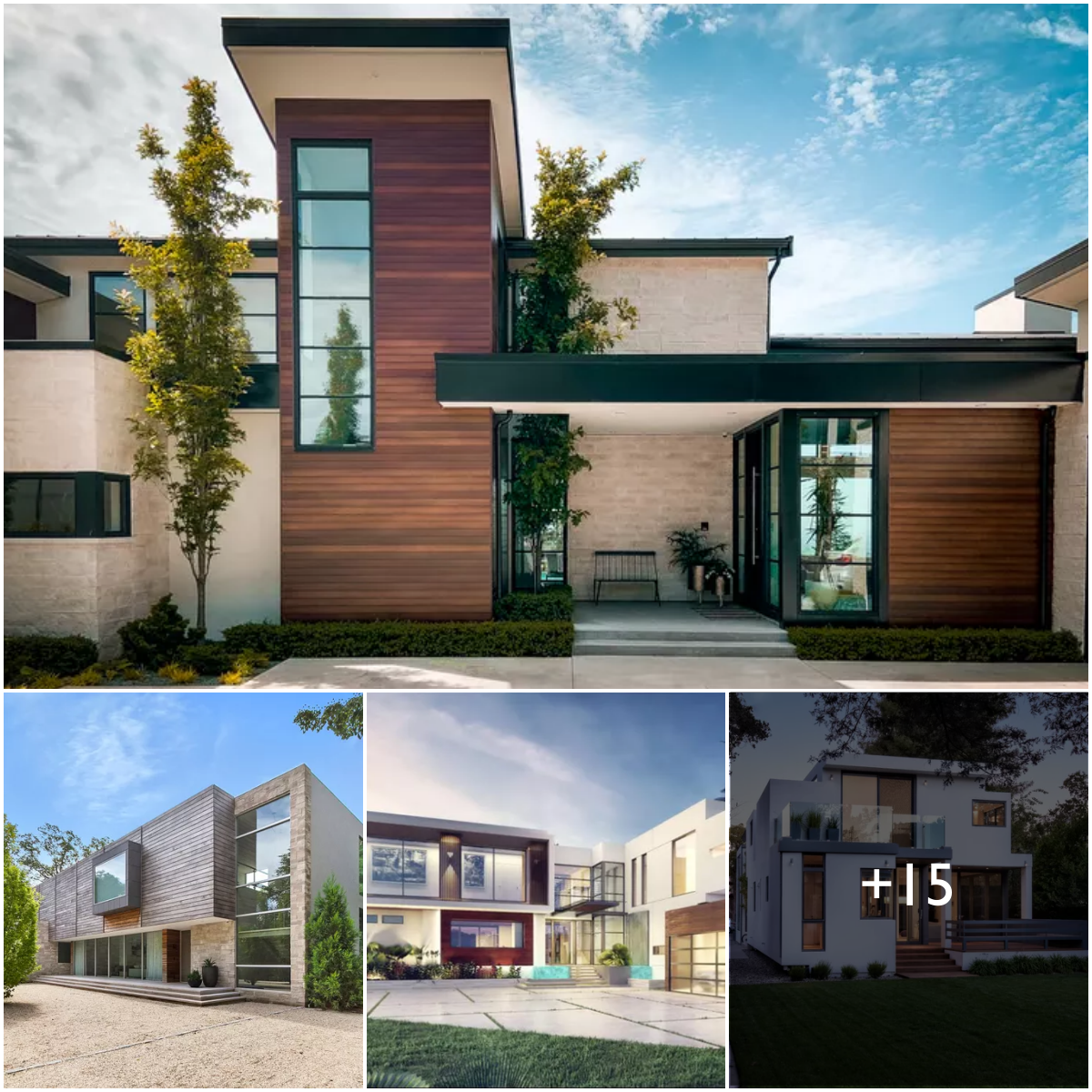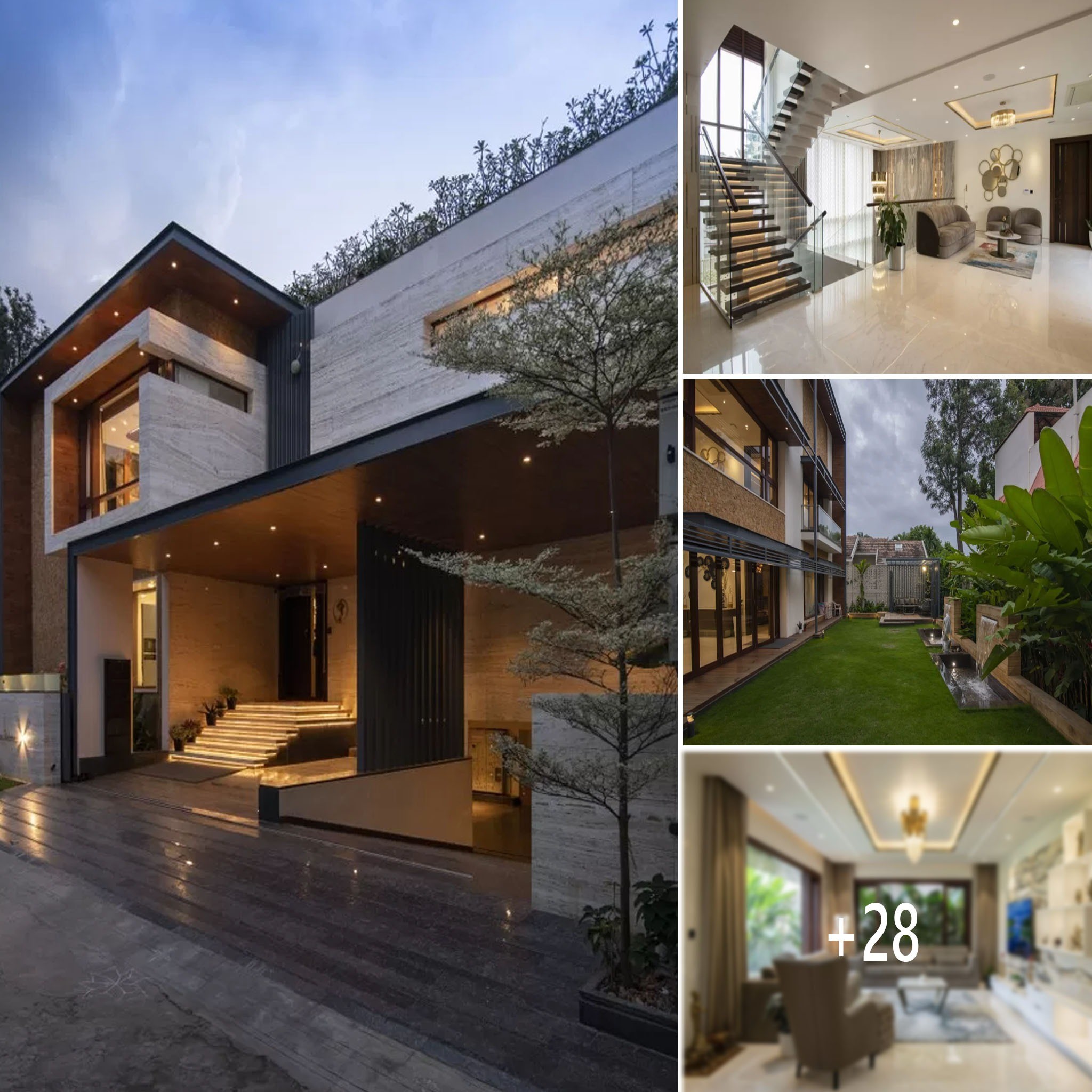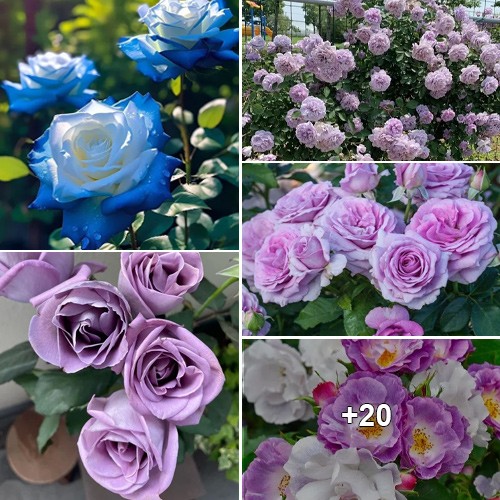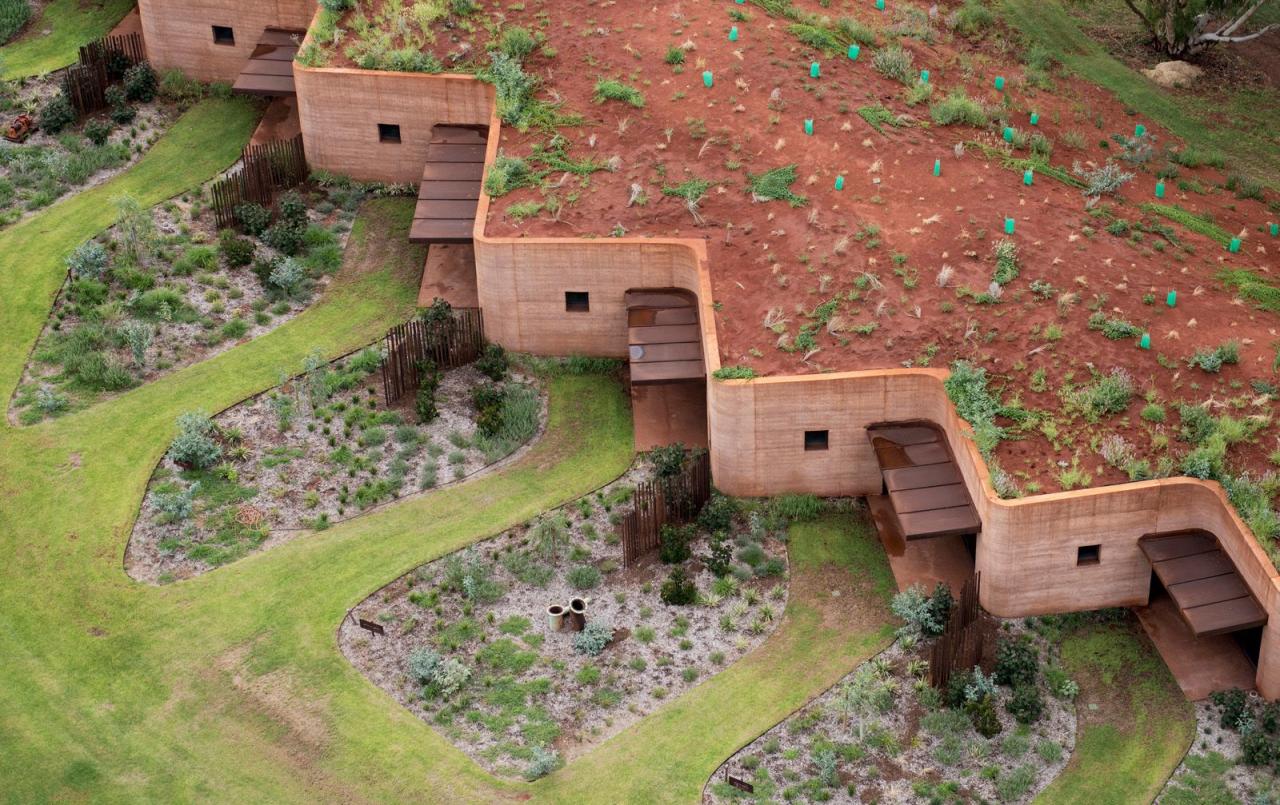
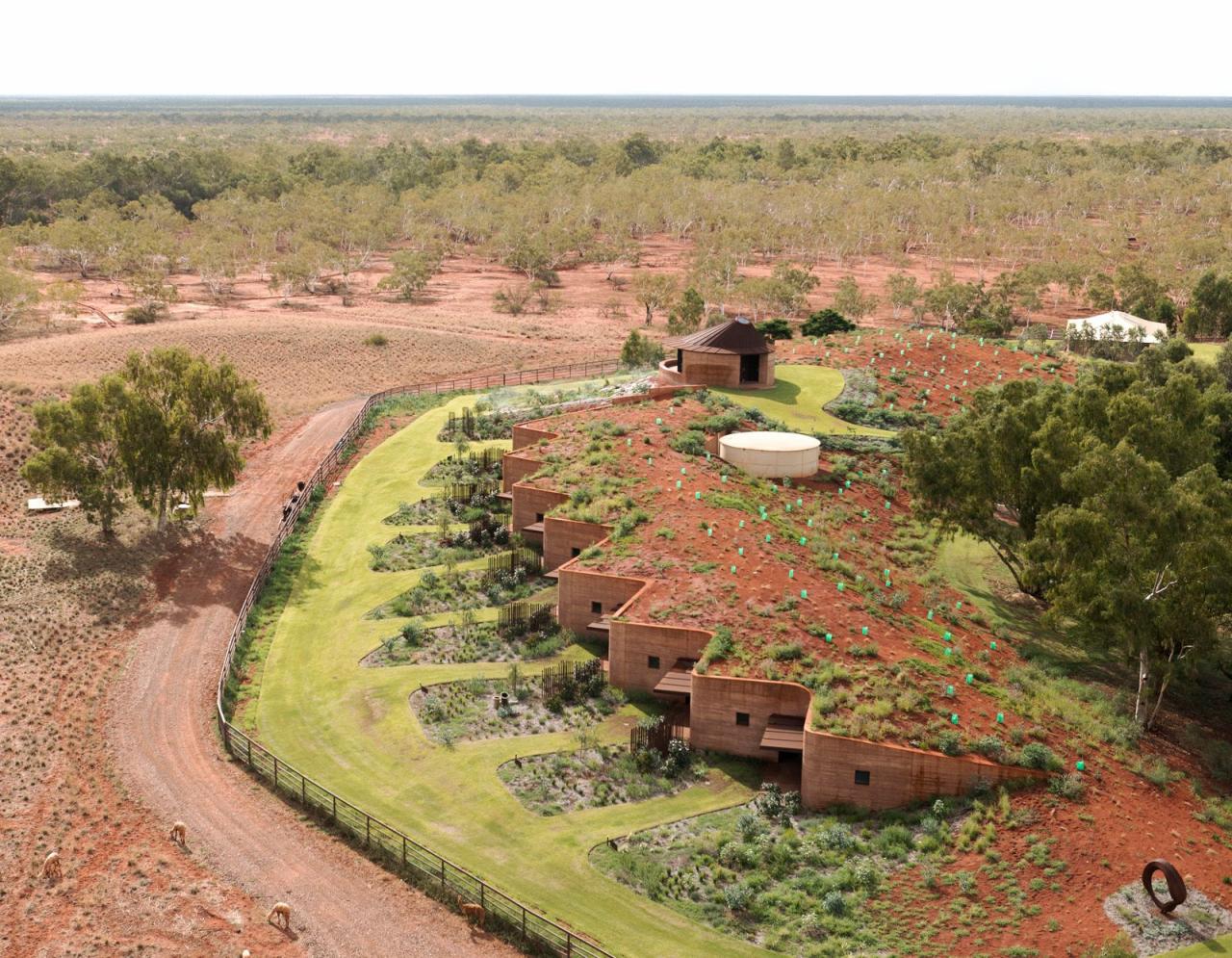
Located in northwest Australia and designed by Luigi Rosseli Architects, this structure is a collection of 12 homes sharing a rammed earth facade and being all semi-buried into the site. This building strategy was used as a way to regulate the temperature and to keep the homes cool.
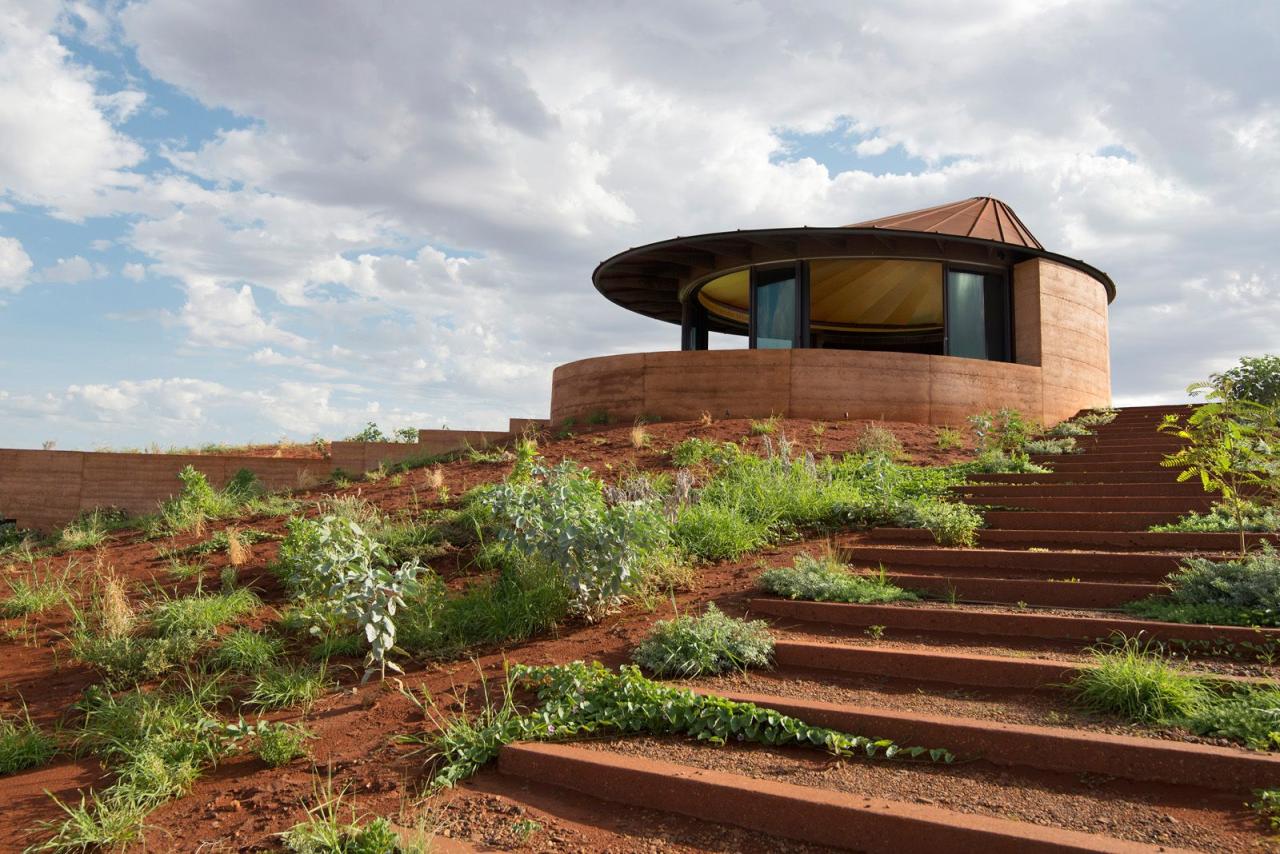
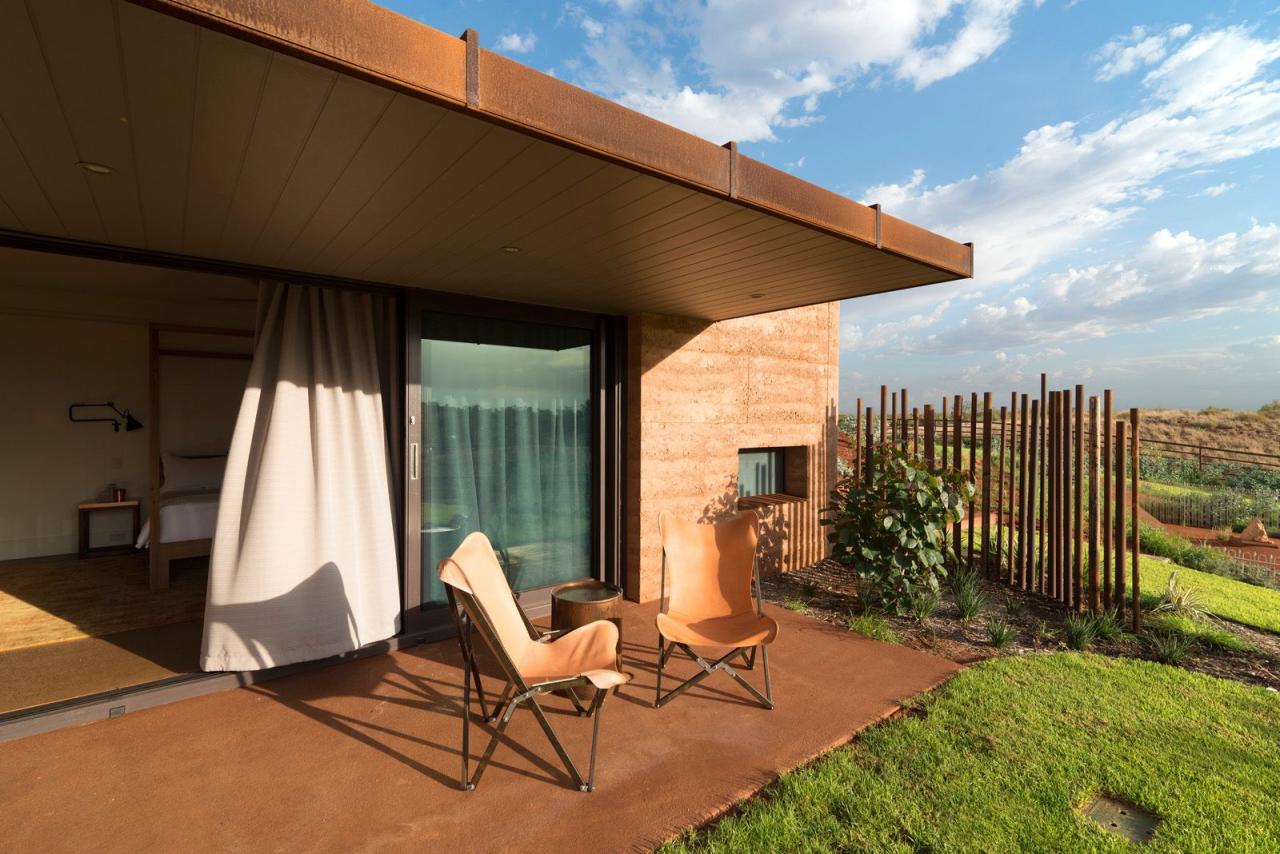
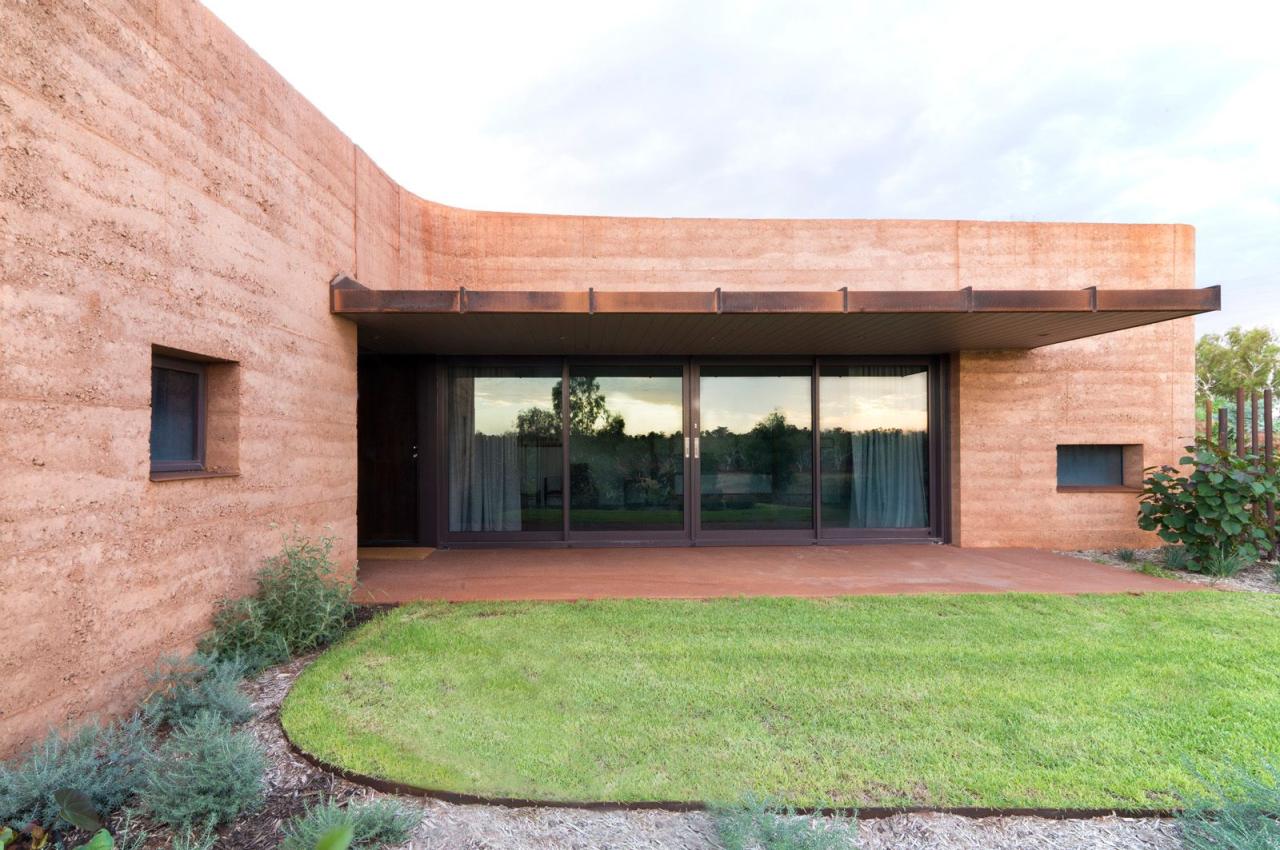
The Great Wall of WA is 230 meters long and follows the line of a sand dune. It is made of iron-rich, sandy clay found on the site which is combined with gravel and pebbles from a nearby river. The interior design was created by Sarah Foletta and uses colors and textures that mimic the surrounding landscape, further emphasizing the connection between the homes and their location.
Casa Jura in France
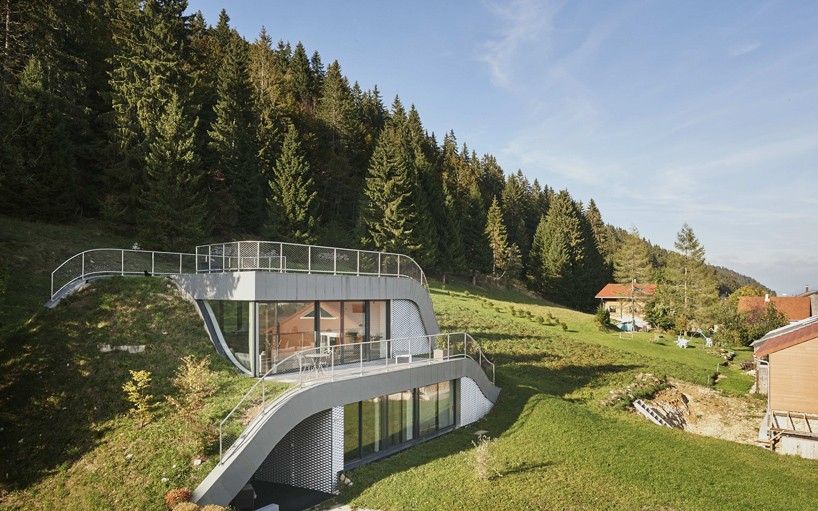
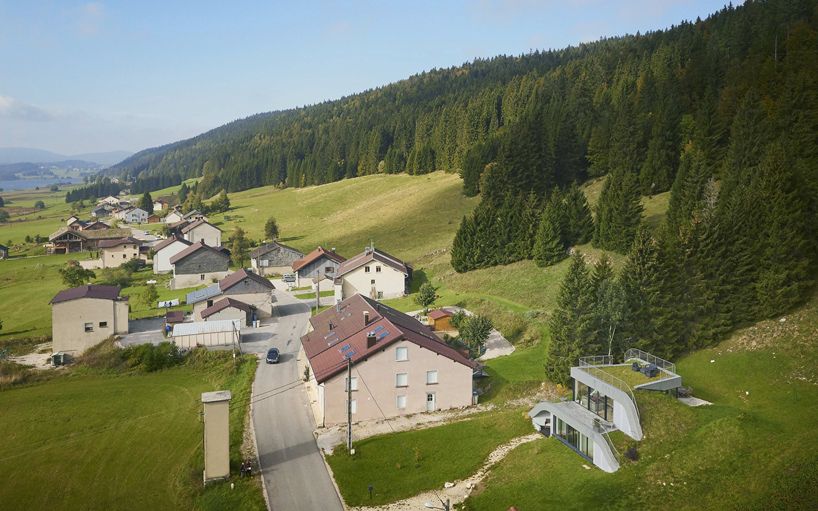
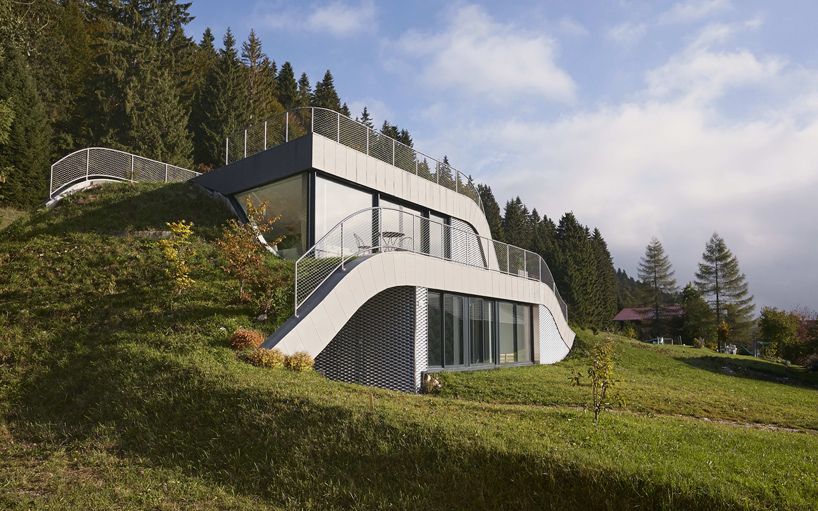
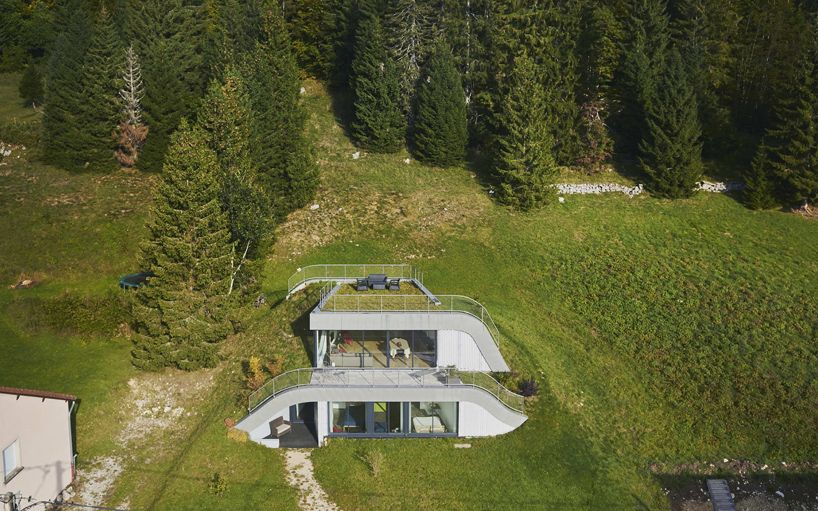
Designed as a tranquil retreat in the French countryside, Casa Jura was a project by JDS Architects who envisioned it as a sculptural and sinuous structure that becomes one with the site. The building is almost entirely concealed into a slope, this allowing it to embrace its surroundings to the fullest.
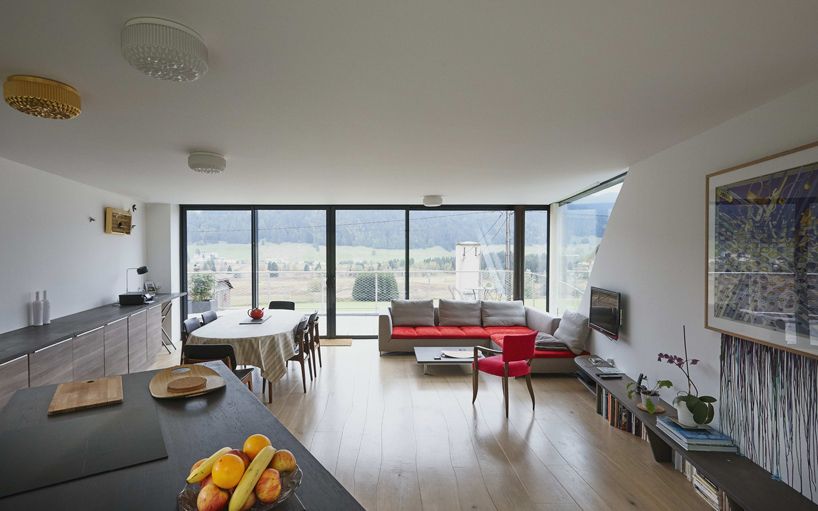
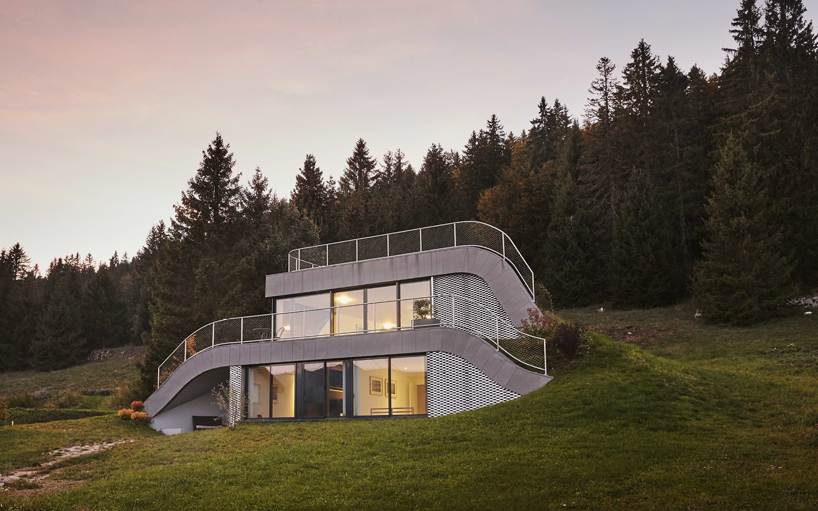
This strategy also allows the house to minimize its impact on the site. The architects had to make three cuts into the site. Two had the role to make room for the full-height glazed facades while the third created a leveled green roof. The full height glass walls open up the house to the views while also bringing natural light in.
Villa Topoject in South Korea
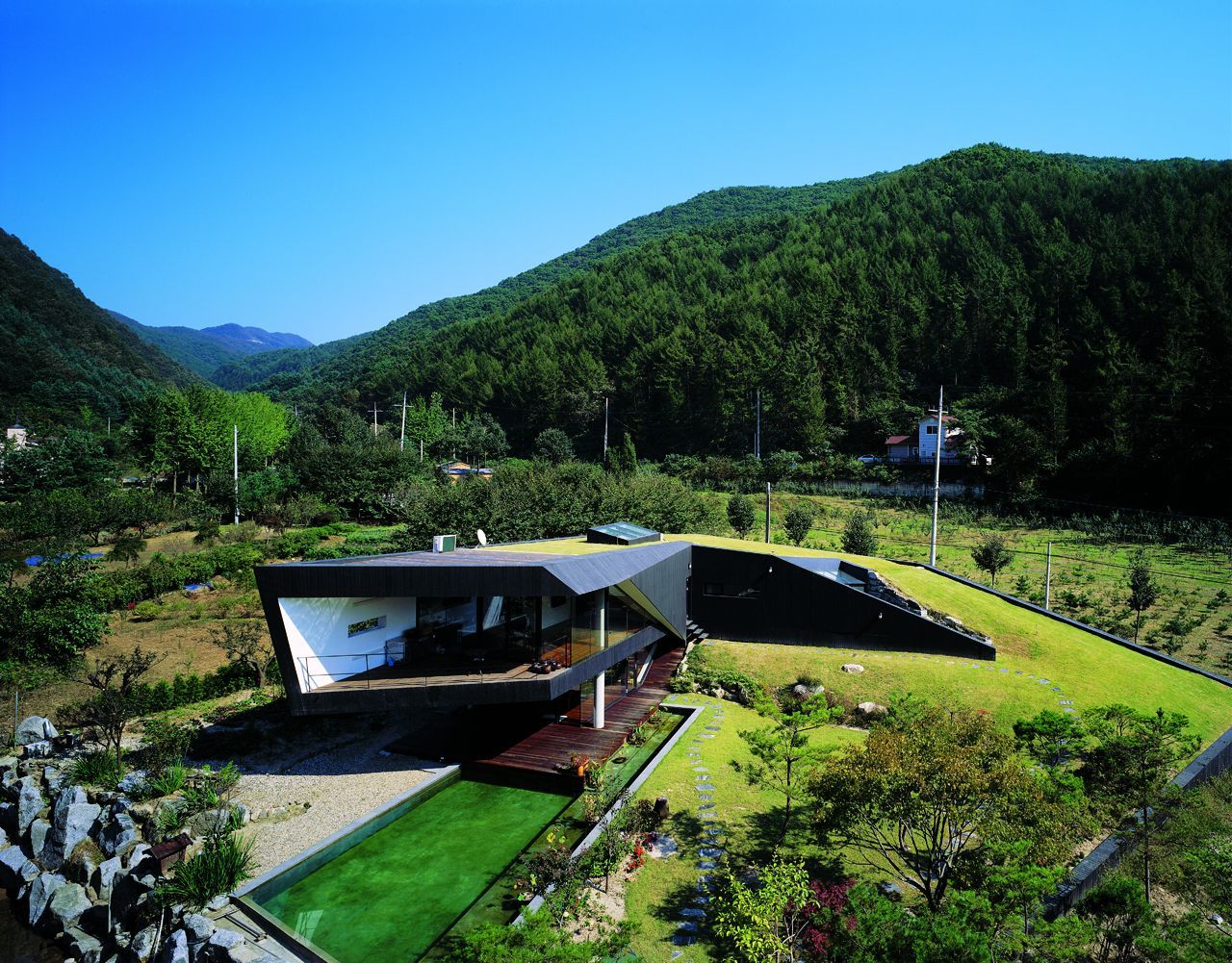
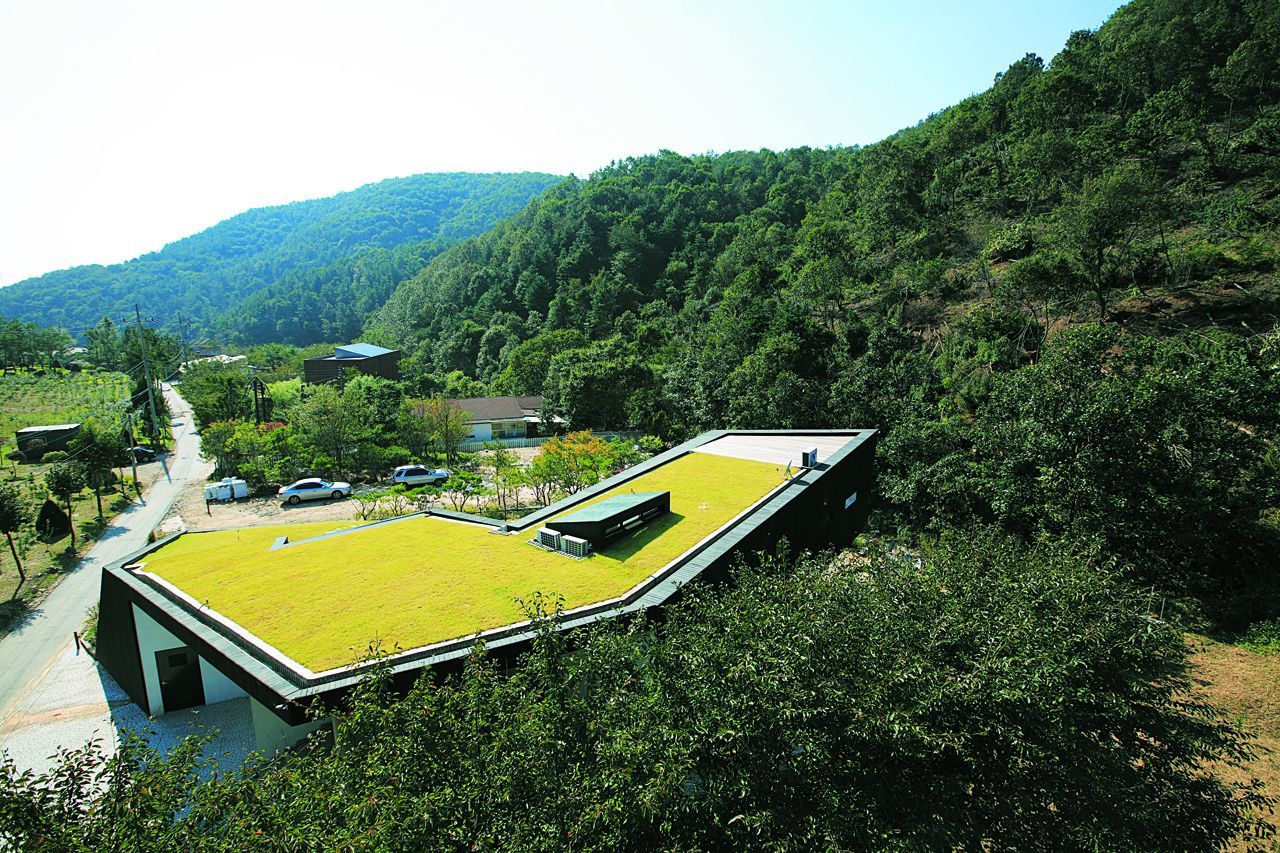
The small valley where this intriguing house is located slopes upward and the architects at AND decided to take advantage of that instead of working around the issue. As a result, this home in South Korea slips under the slope where it forms a series of private spaces.
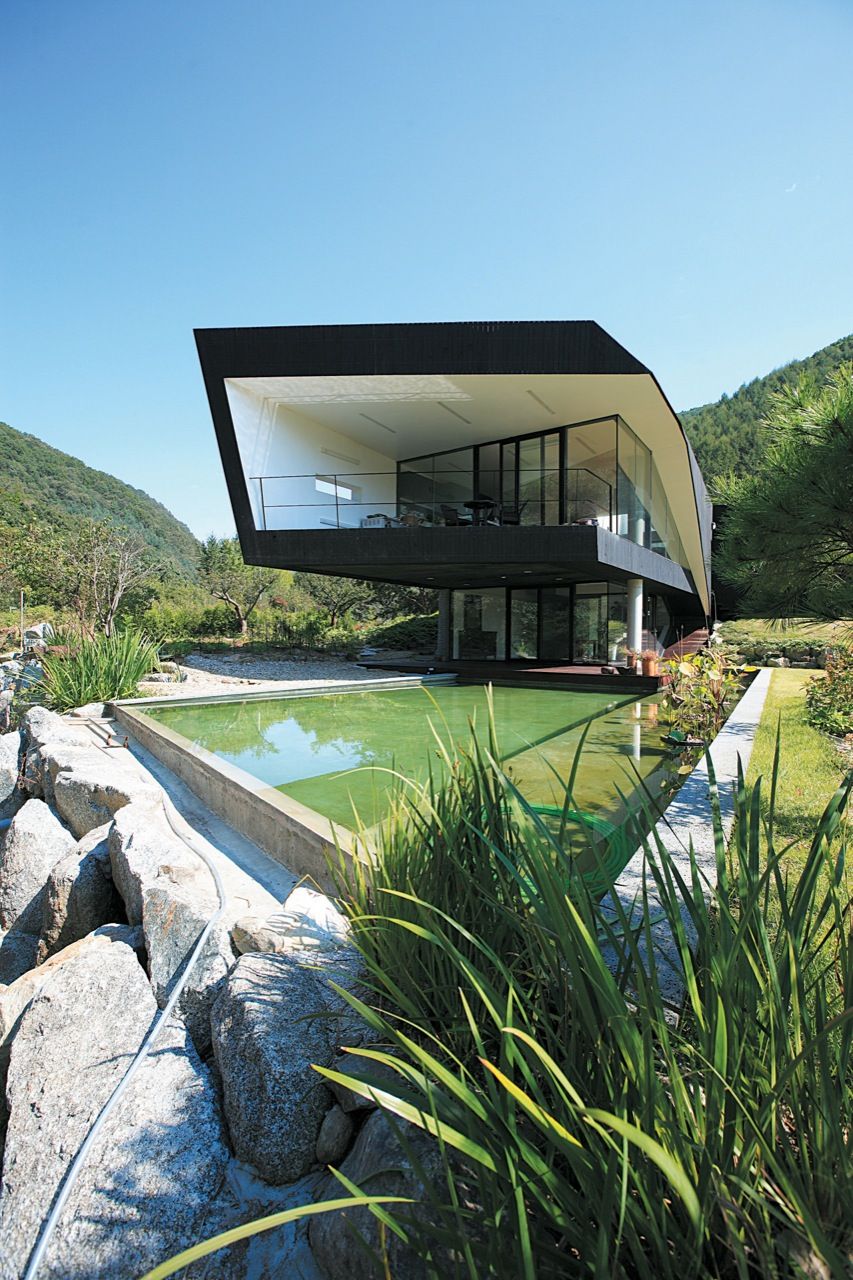
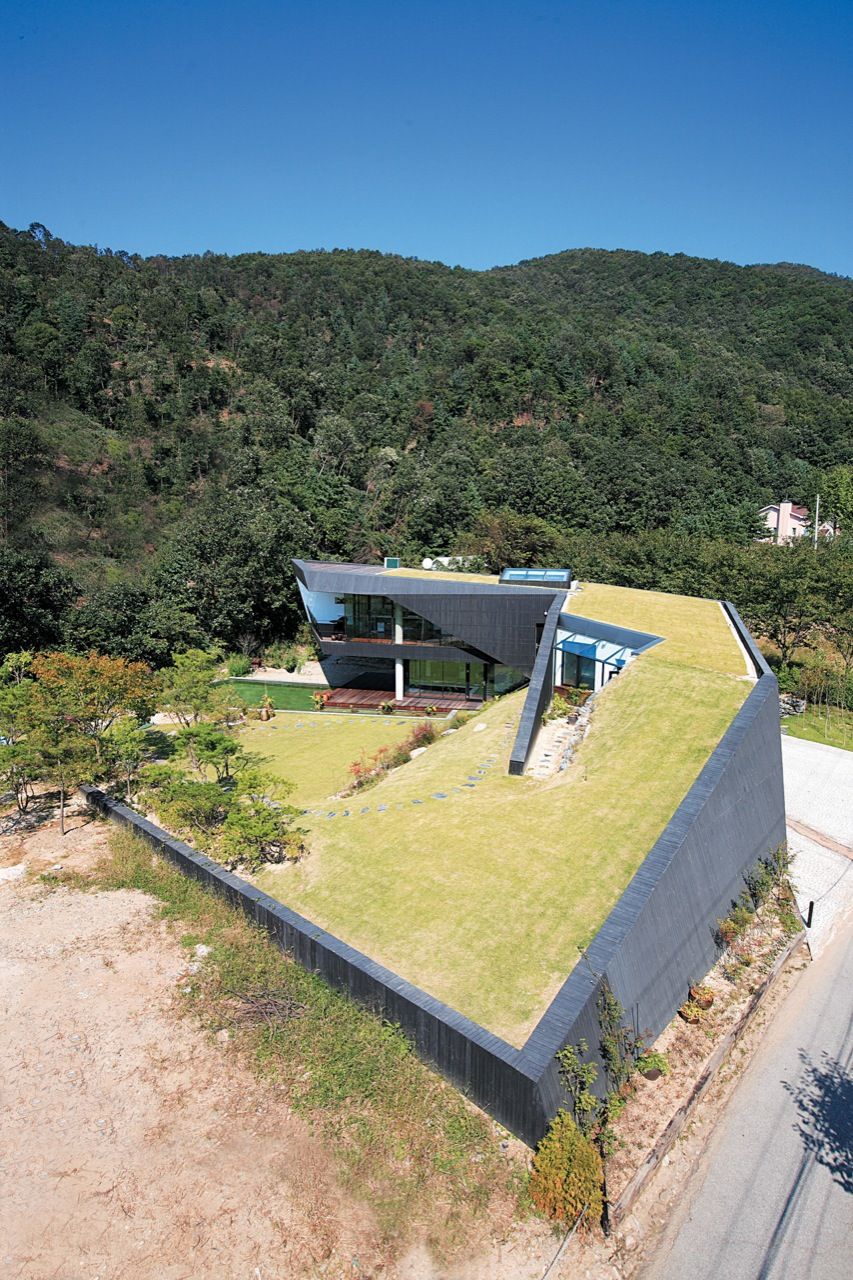
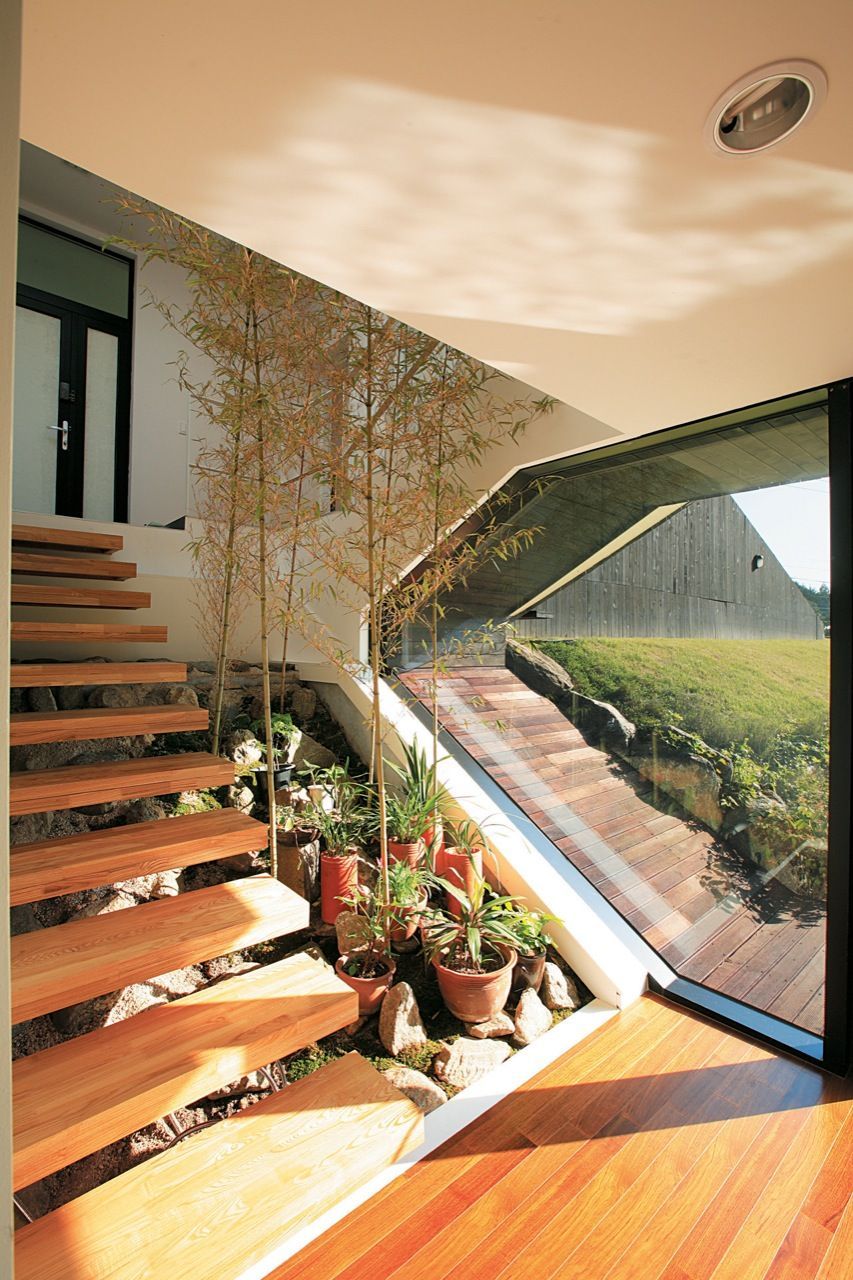
The house was designed for a couple who wanted to enjoy rural life while maintaining their connection to the city. This design allows them to take in the beauty of the surroundings and to stay in contact with the land while also being able to observe nature and to admire the views. A green roof allows the structure to gradually become a part of the site.
Joan Maragall Library in Spain

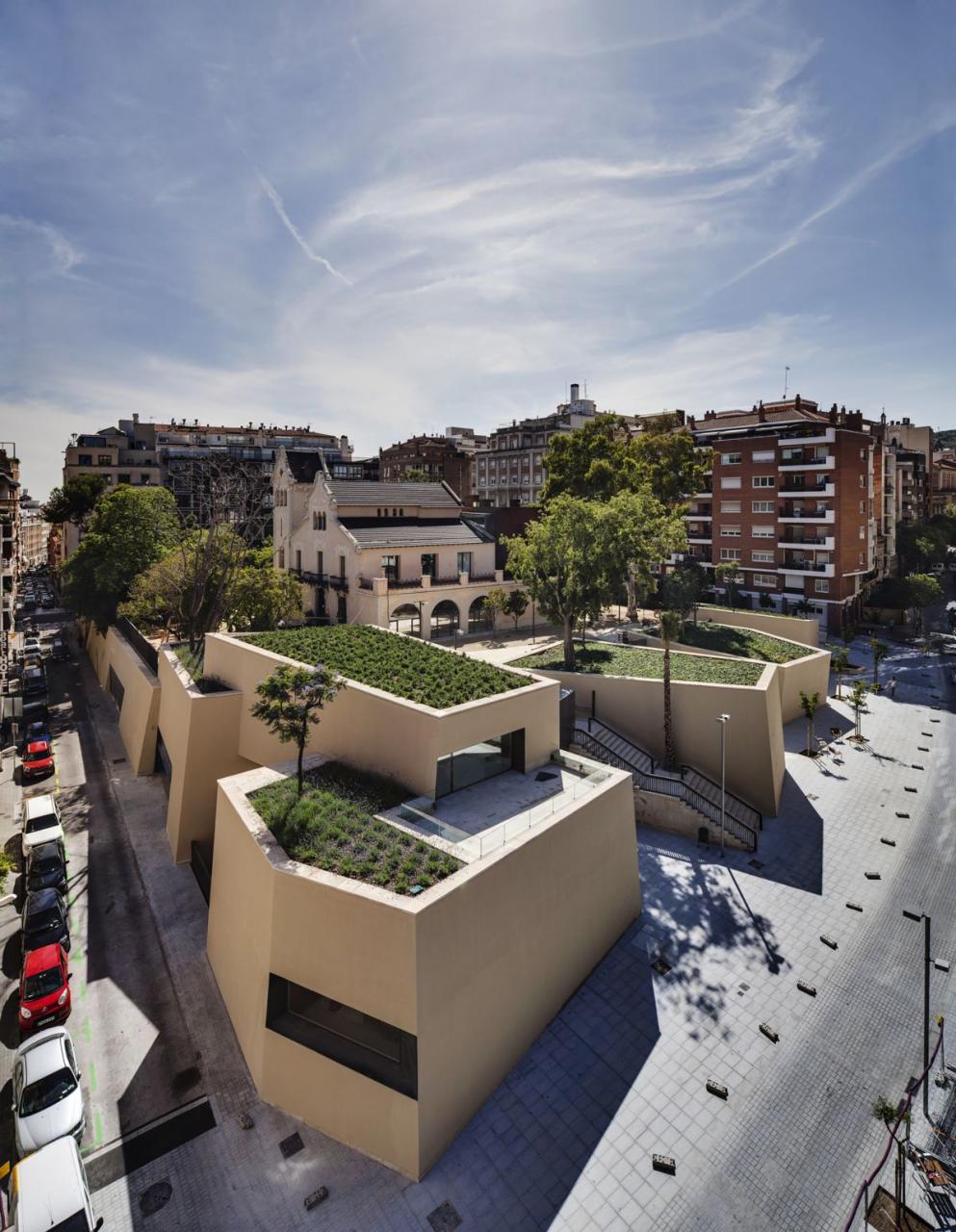
When faced with the challenge of creating a new library building in this area of Barcelona, in Spain, BCQ Arquitectura decided that the best option was to build this new structure below the old garden which existed there. This way the building and the garden would each have their own unique character but would also share something in common.
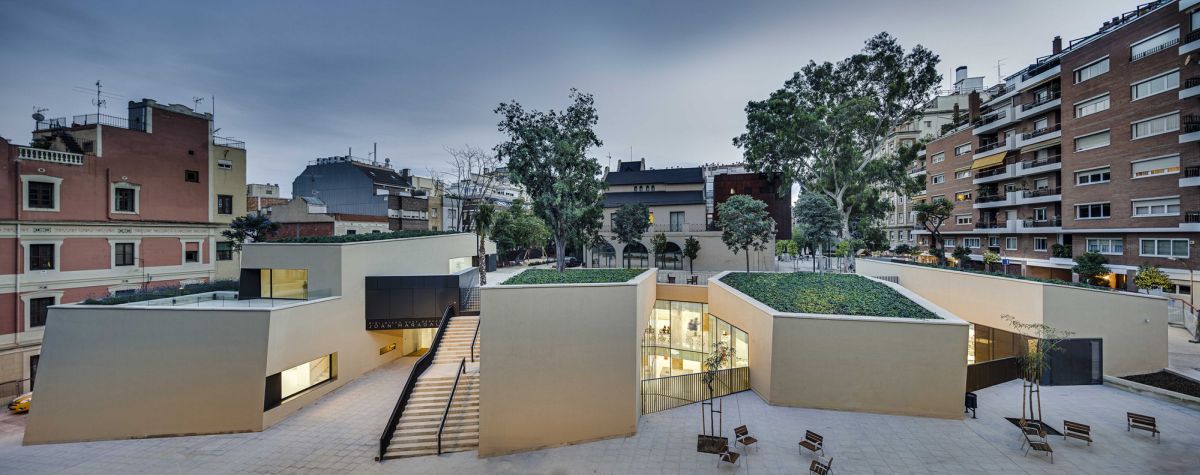
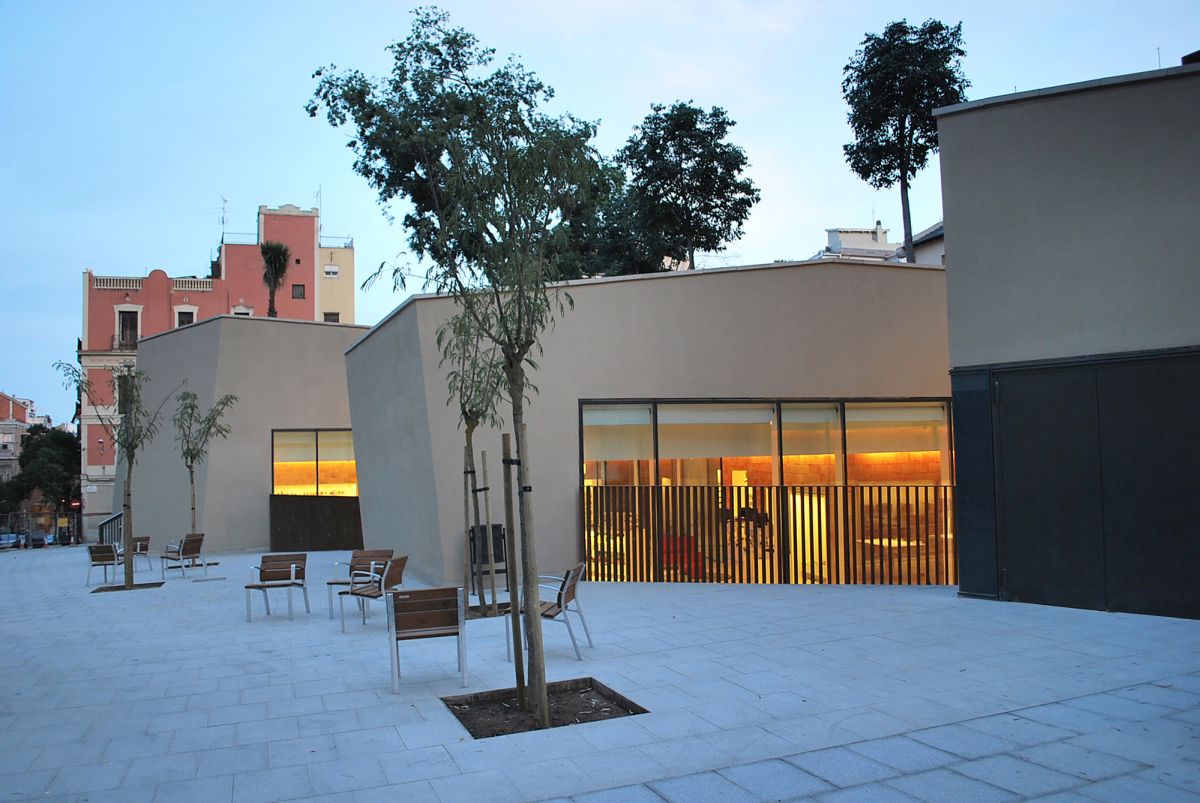
The result was a modern library building inserted under the garden of Florida Villa. It has a green roof situated at the same level as the garden. The interior is simple and well-lit thanks to the glass facades facing the street. The walls are covered with clay tiles, a reminder of the semi buried nature of the building.
Biesbosch Museum Island
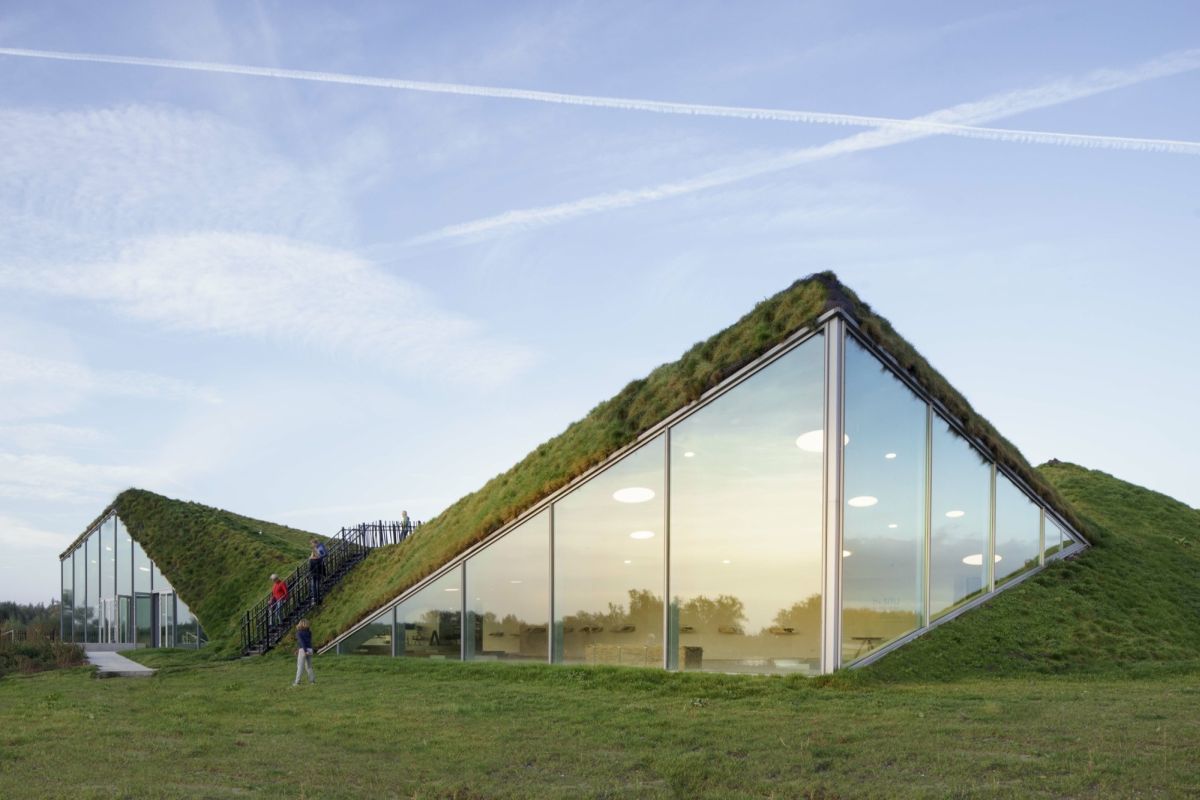
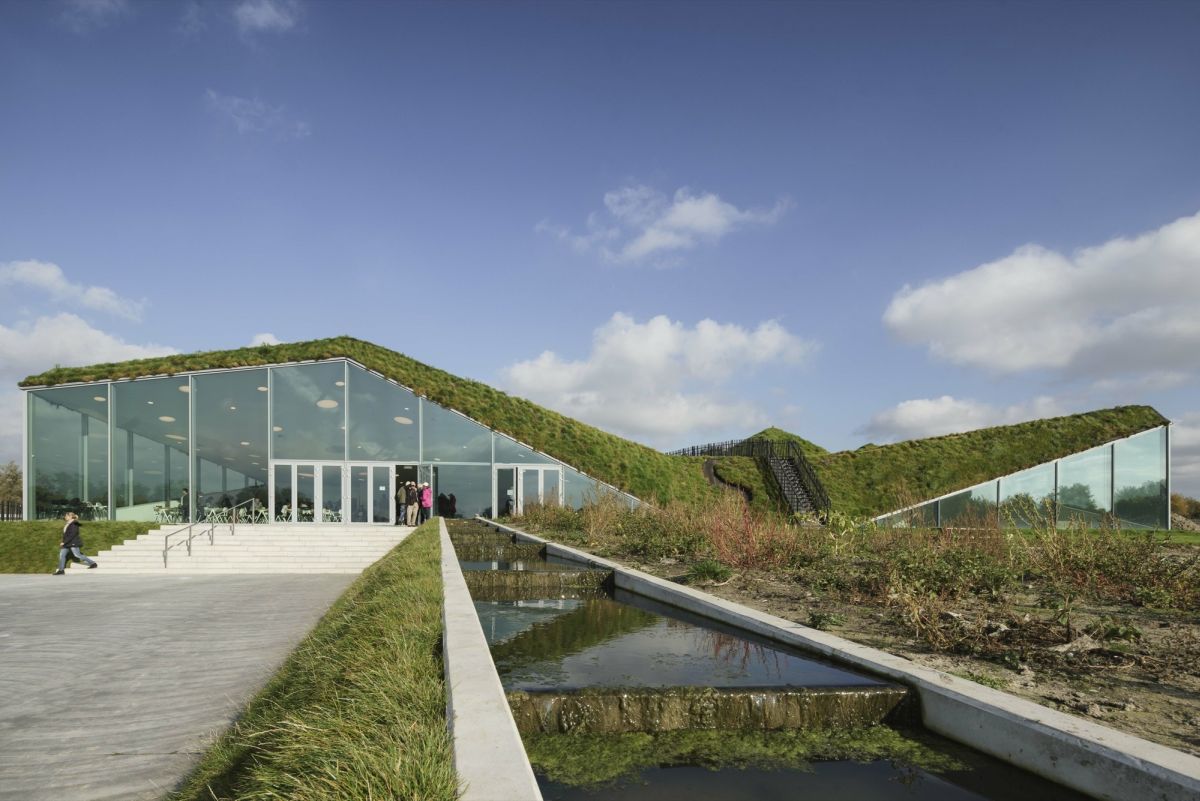
From up in the air, this is a structure that can barely be noticed. That’s because it’s buried into the site. This is the Biesbosch Museum Island in the Netherlands. It was designed by Studio Marco Vermeulen in 2015 as part of a renovation project which took eight months.
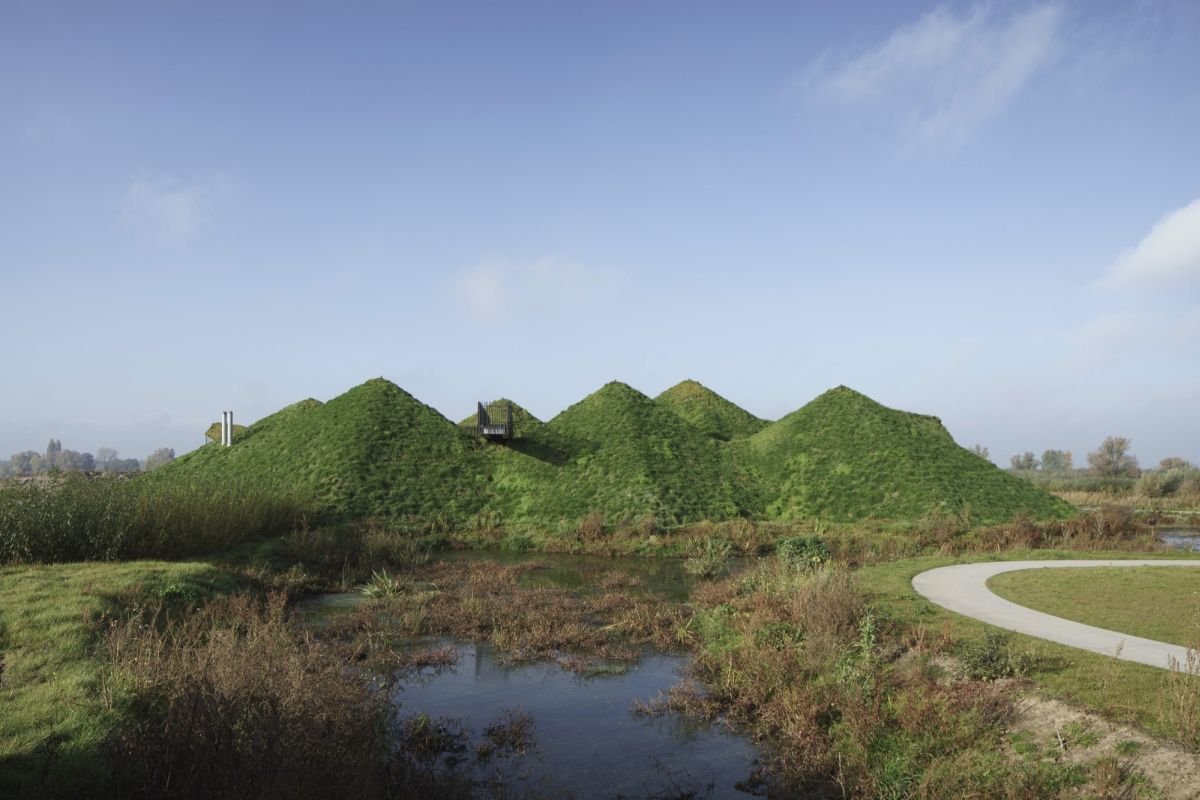

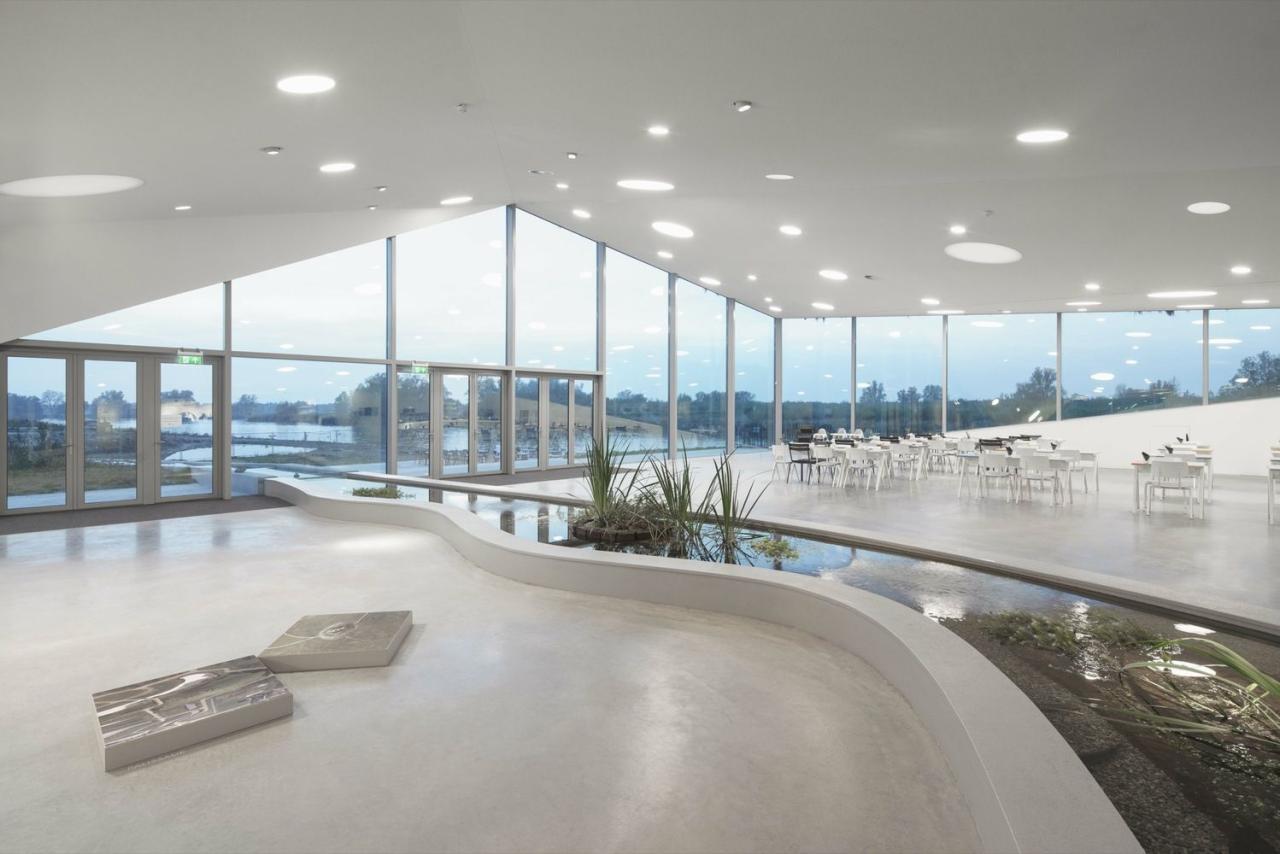
The museum was completely transformed and was also extended. Both the old and the new sections of the museum are covered with a green roof of grass and herbs. This gives the museum a sculptural and organic look which makes it a natural part of the landscape.
Hajdo House in Romania
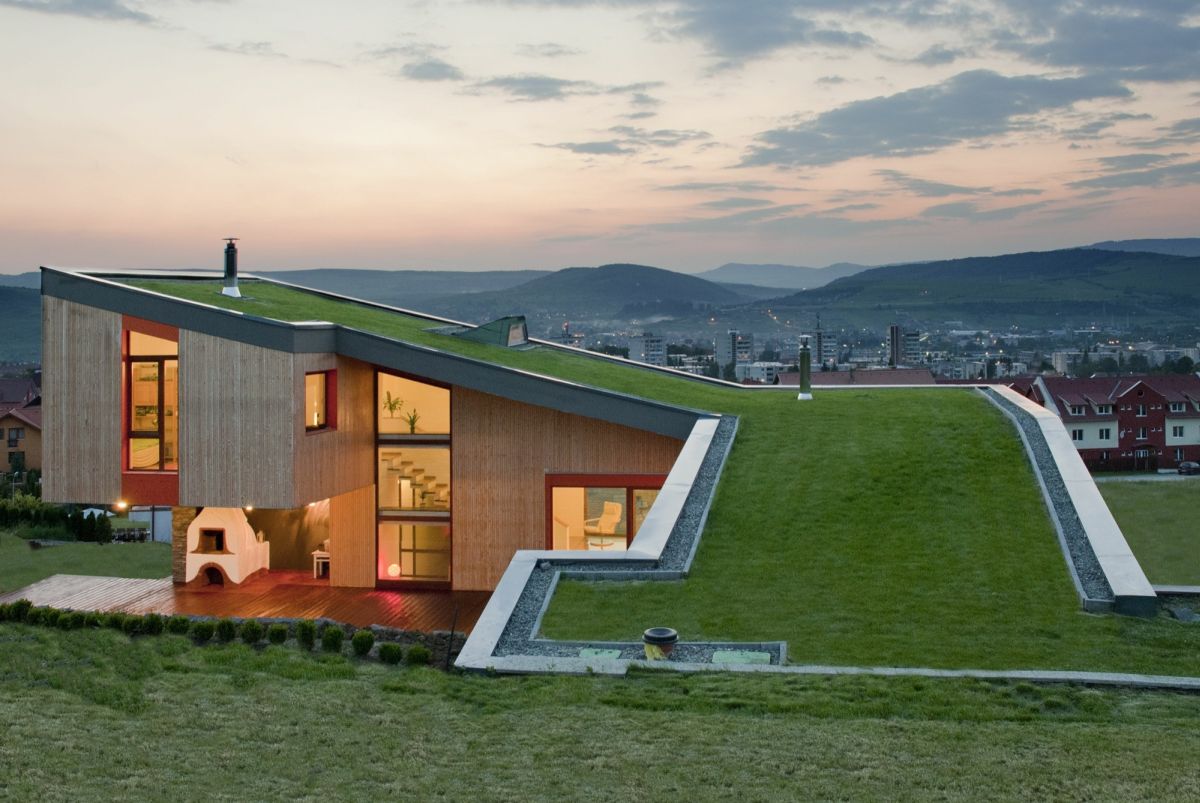
The Hajdo House dominates the landscape with its simple and innovative design. It’s located in Odorheiu Secuiesc, in Romania and it was a project by BLIPSZ and Atelier F.K.M. The building embraces the slope on which it stands, seamlessly enveloping itself in the land and becoming a part of it.

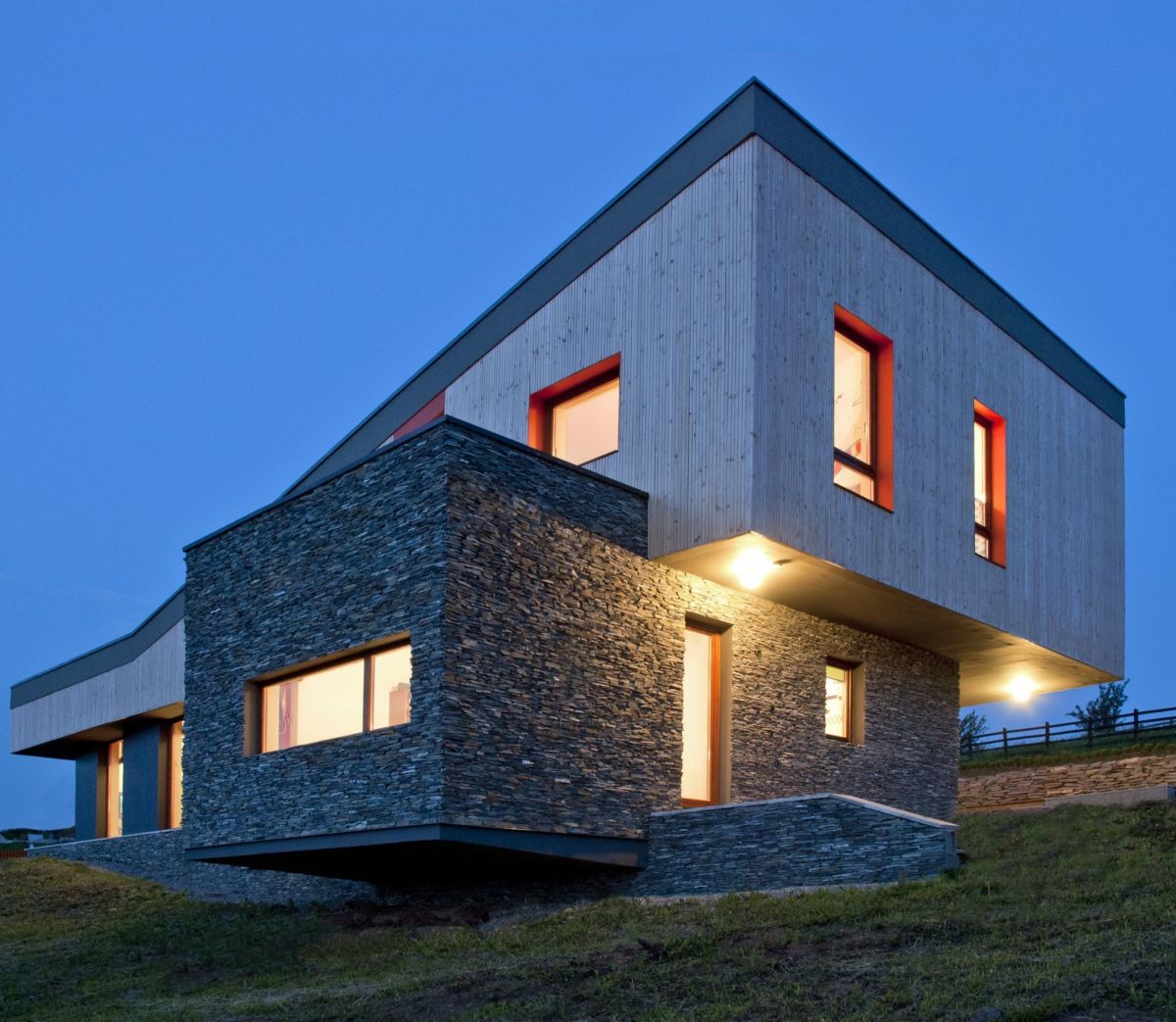
The House is oriented to the South to take advantage of the views and the conditions on the site. The internal spaces are organized according to criteria such as the topography of the land and optimal orientation. The green roof is angled and forms a usable ramp that reaches ground level at the back.
Los Angeles Museum of the Holocaust
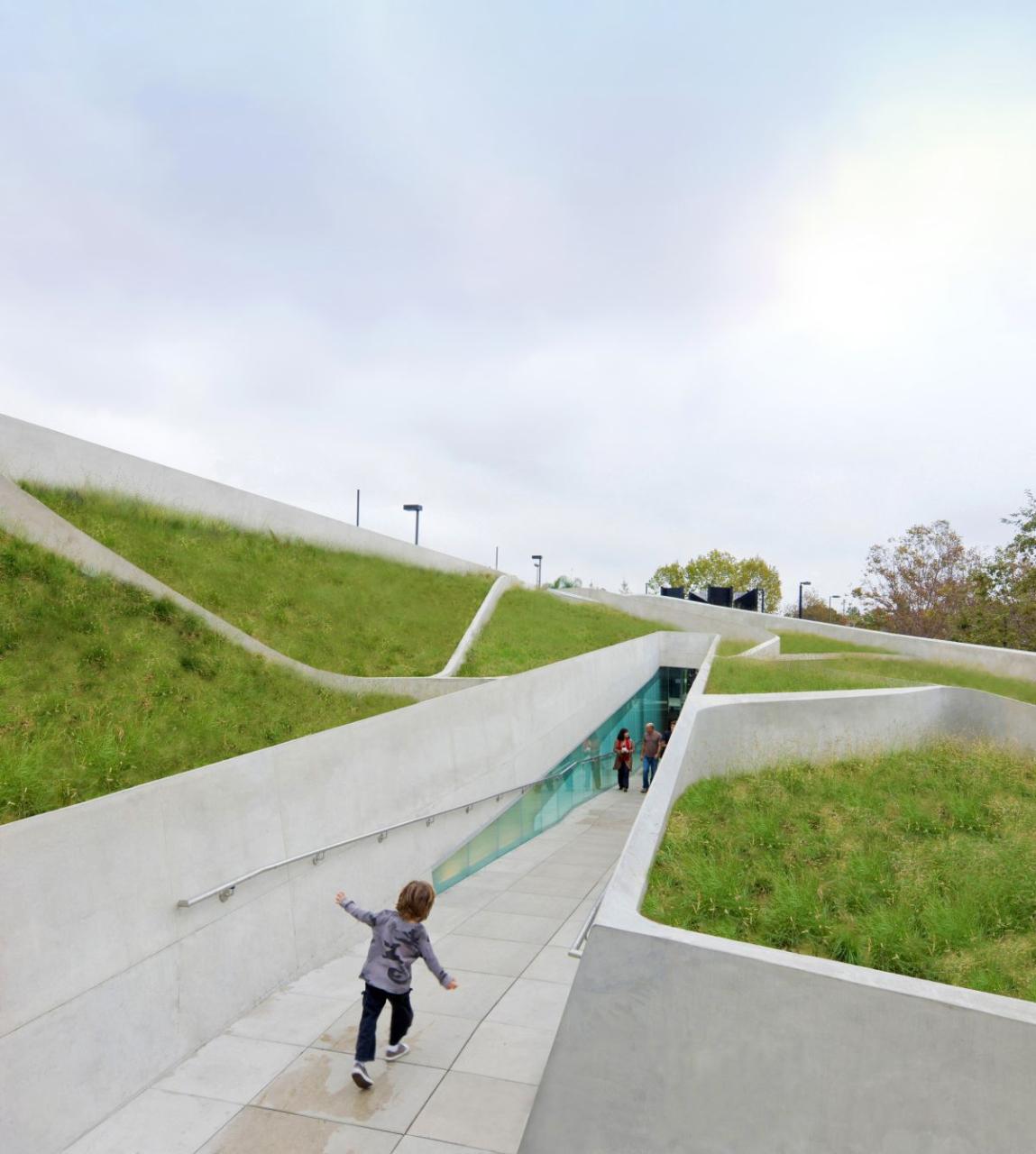
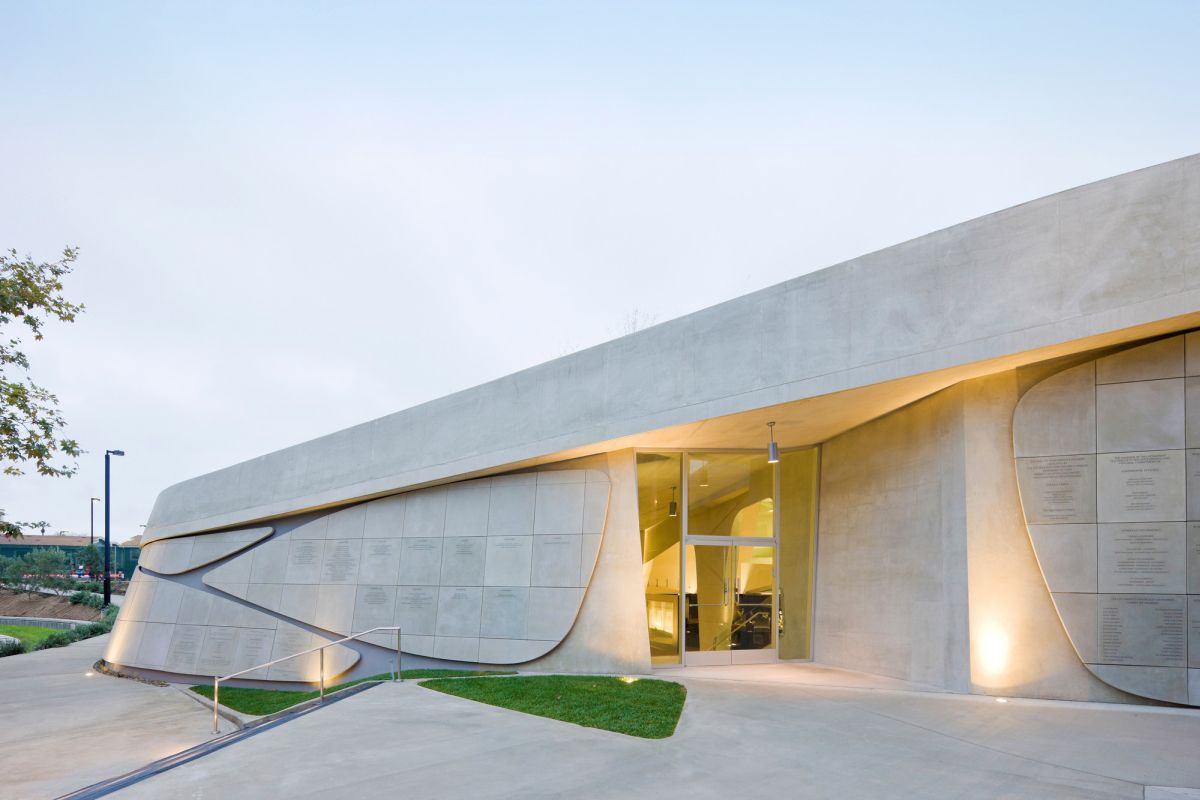
The new Los Angeles Museum of the Holocaust or LAMOTH was designed by Belzberg Architects and is located within a public park. The main focus of the design was to integrate the building into the landscape. The chosen strategy was to have it built into the ground and to allow the landscape to continue over the roof.
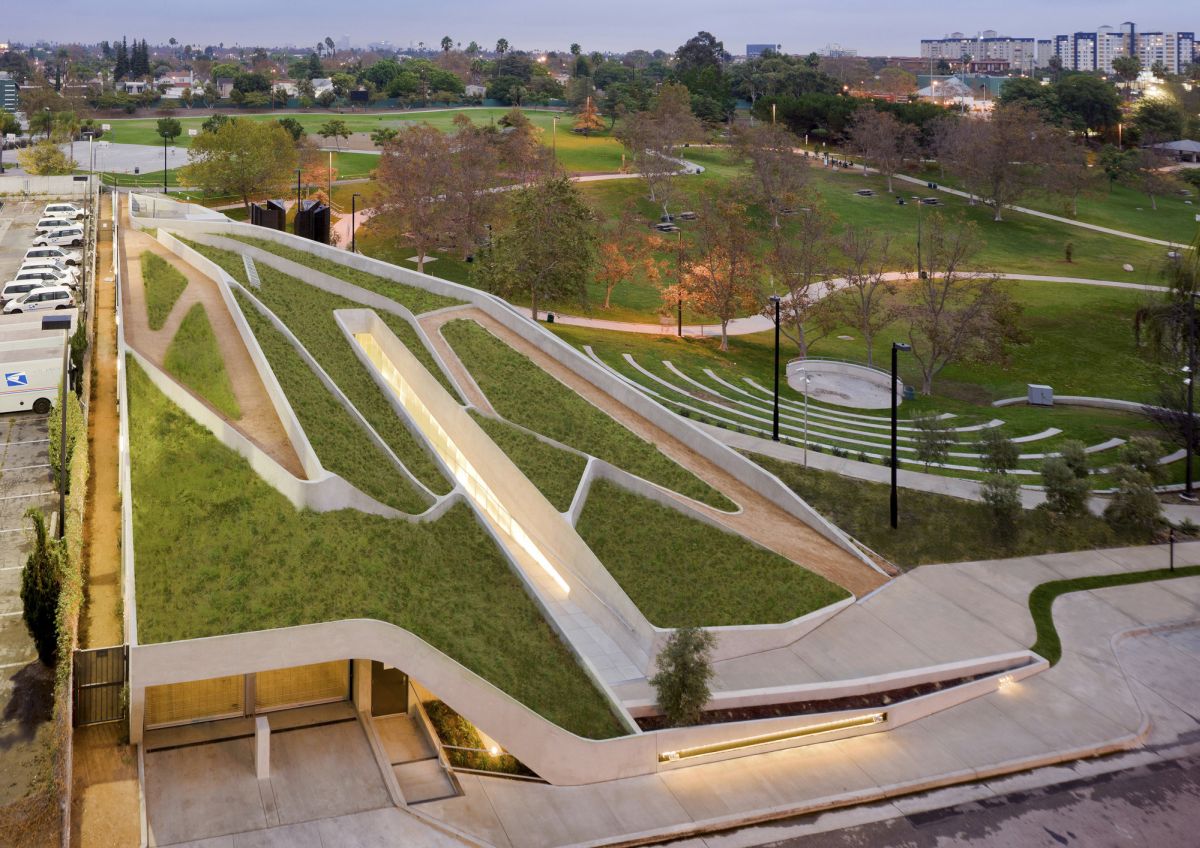
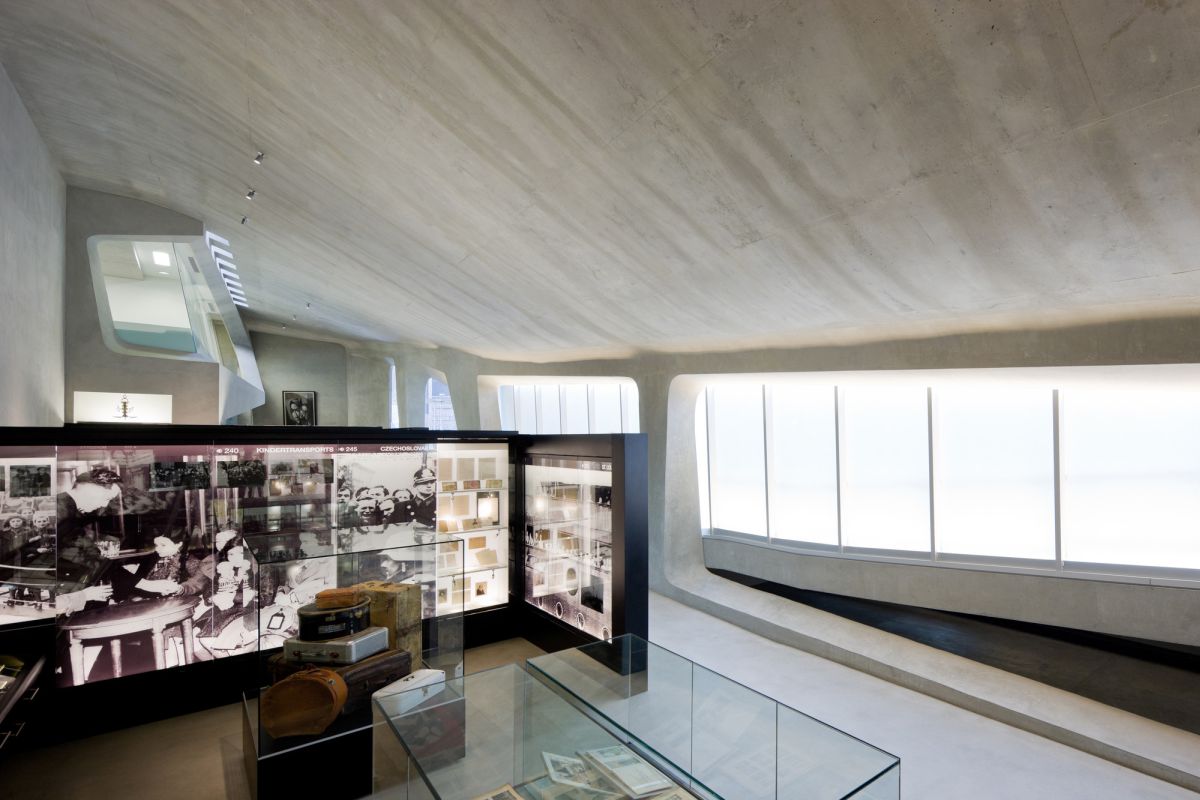
Park pathways connect the museum to the park and then morph into the building forming smooth patterns. The combination of concrete and vegetation and the contrast resulted from here was continued throughout and used by the architects to create a distinctive facade.
The Edgeland Residence
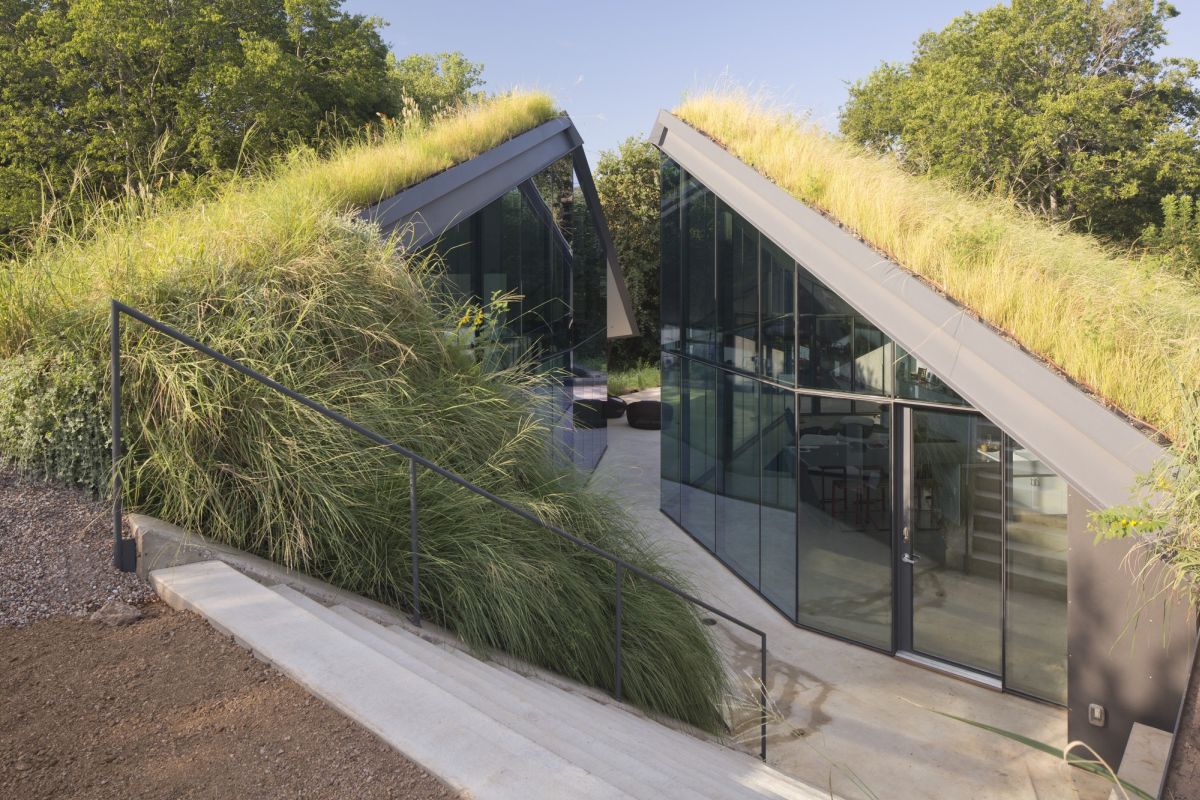
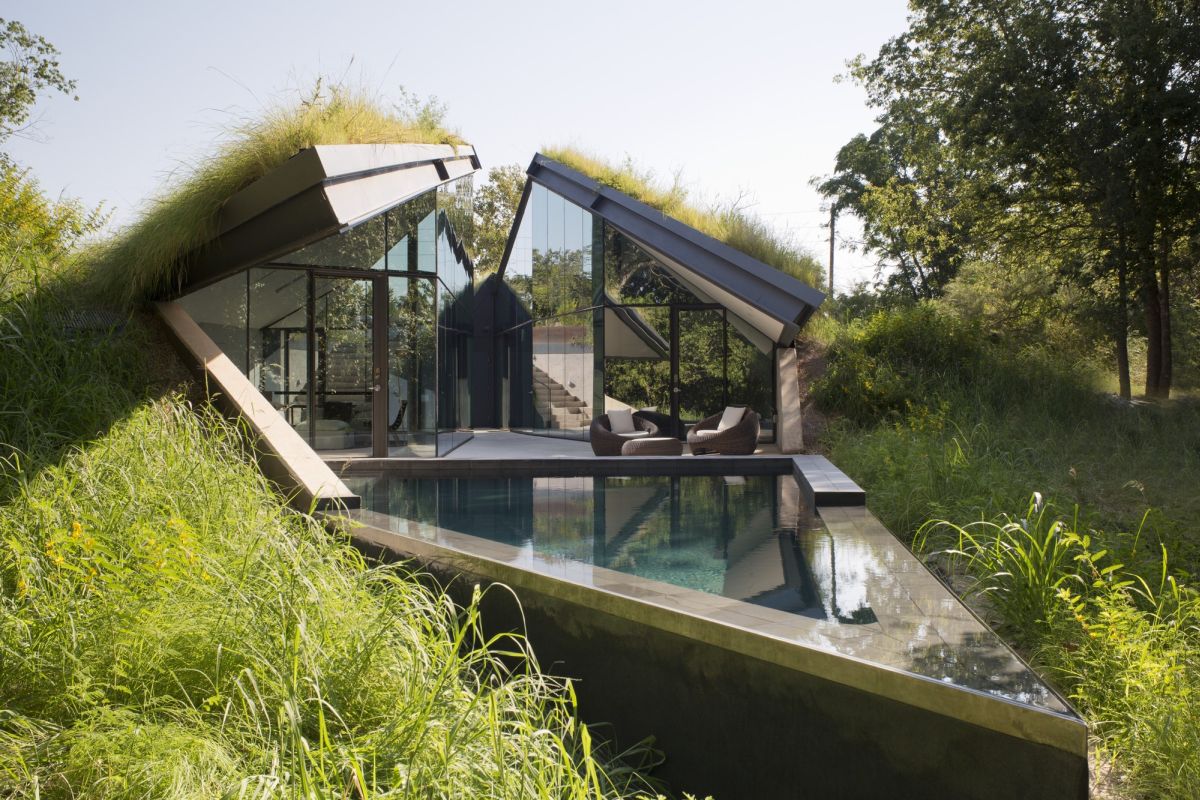
Designed by Bercy Chen Studio, the Edgeland Residence sits on a small site on the shores of the Colorado River. Its design is modern and sustainable, inspired by pit houses. It was built into the site and was divided into two separate pavilions with angled green roofs. A pathway cuts through the central living space, making the distinction between these areas more visible.
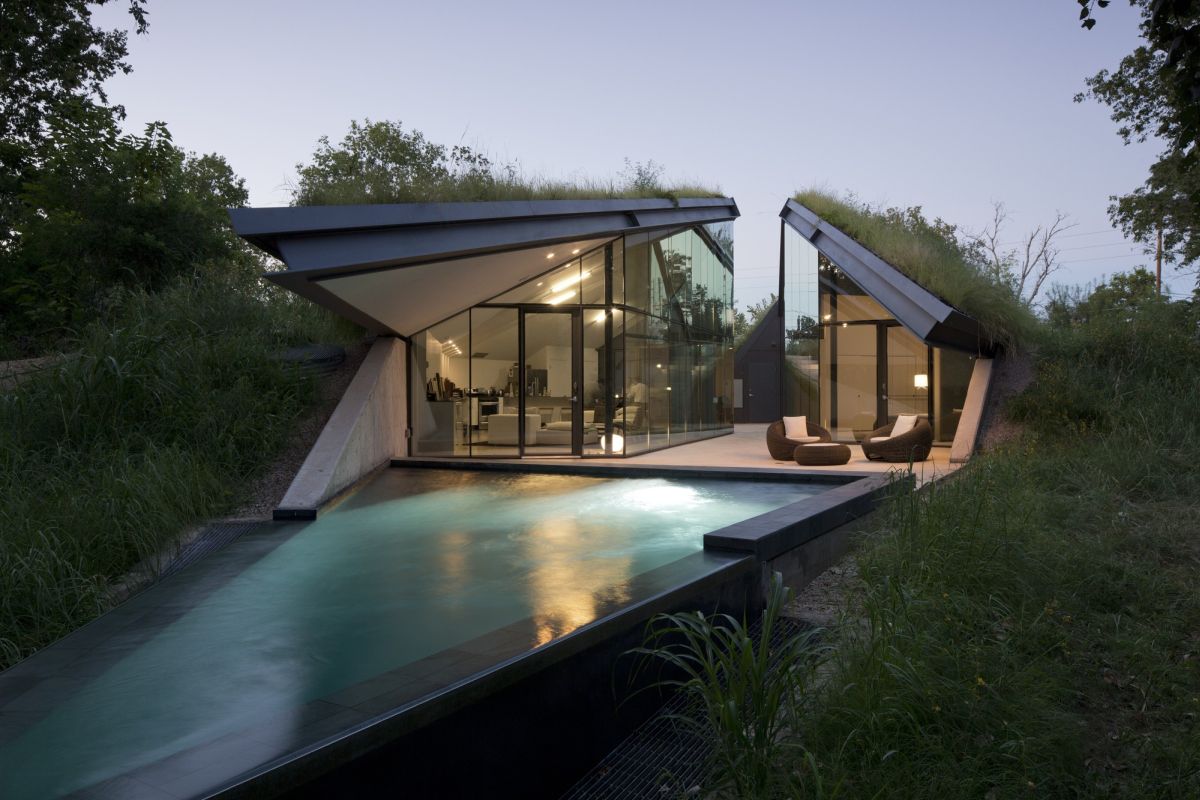
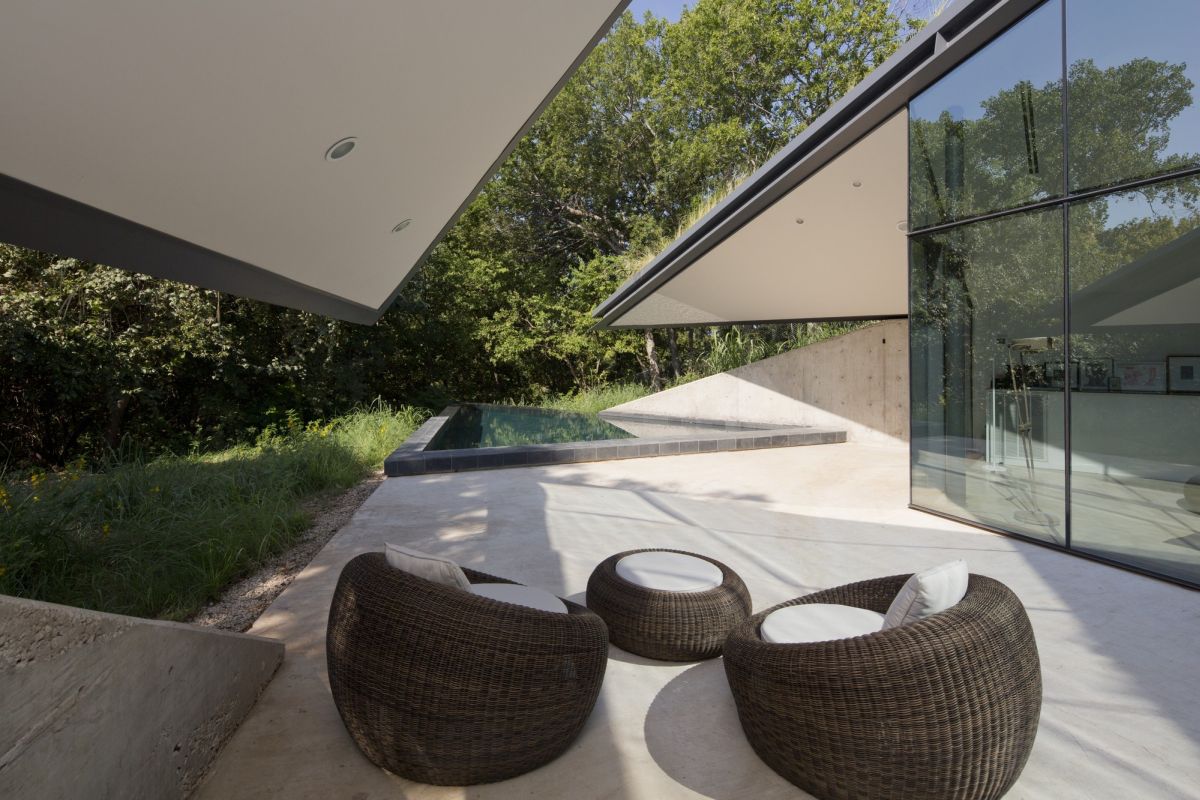
By organizing the house into two pavilions, the architects managed to separate the public spaces from the private sleeping zone. In order to go from one area to the other one must get out, this being a deliberate detail designed to draw attention to nature.
Sustainable home in California
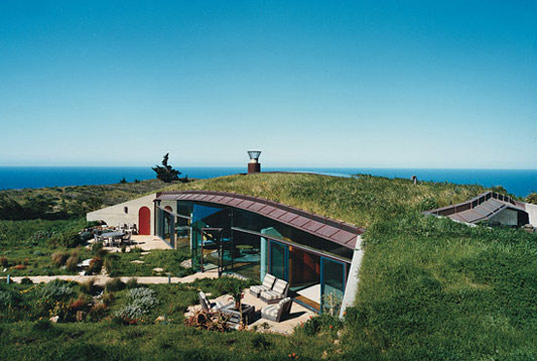
The strategically-placed doors and windows are the only elements that allow this contemporary home to peek out from beneath the ground. Architect Mickey Muennig managed to make it perfectly blend into the surroundings by integrating it into the site and giving it a green roof.
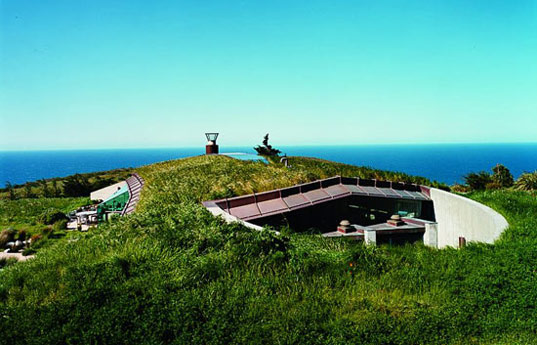
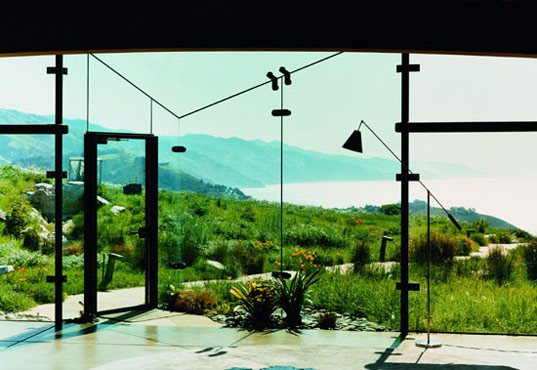
The green roof also has a second role: to insulate the building and to reduce energy consumption. If we add to that the fact that the house uses solar power then it becomes clear that this is indeed one of the most impressive and eco-friendly homes you can dream of.
Green-roofed structures
Prefab modular home
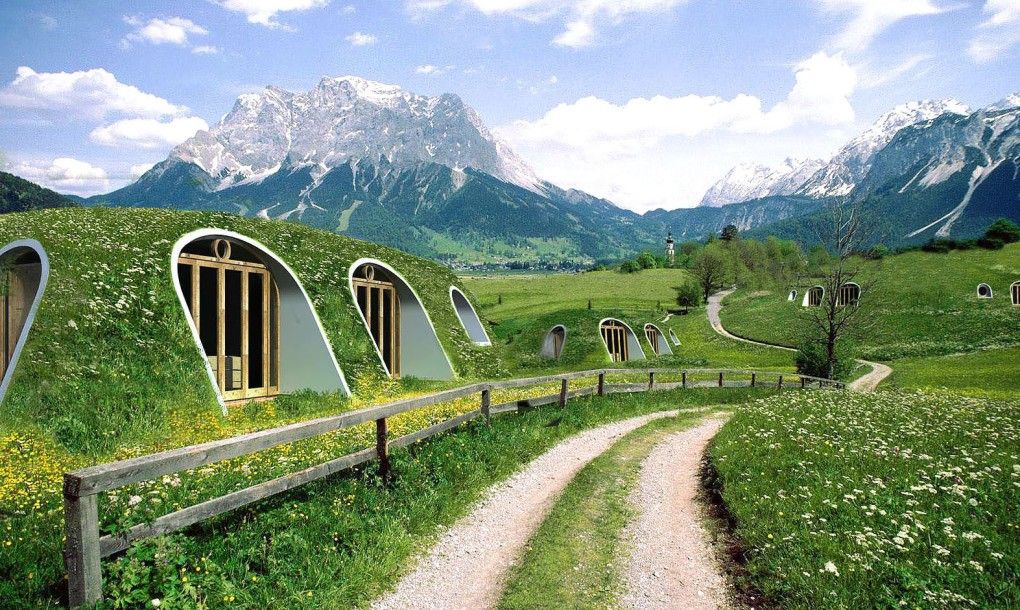

Green Magic Homes has come up with a solution which allows homeowners to have green-roofed homes without having to deal with water-damage. This is a house which can be built in 3 days. That’s because it’s a prefab home made with vaulted panels that can be easily joined together.
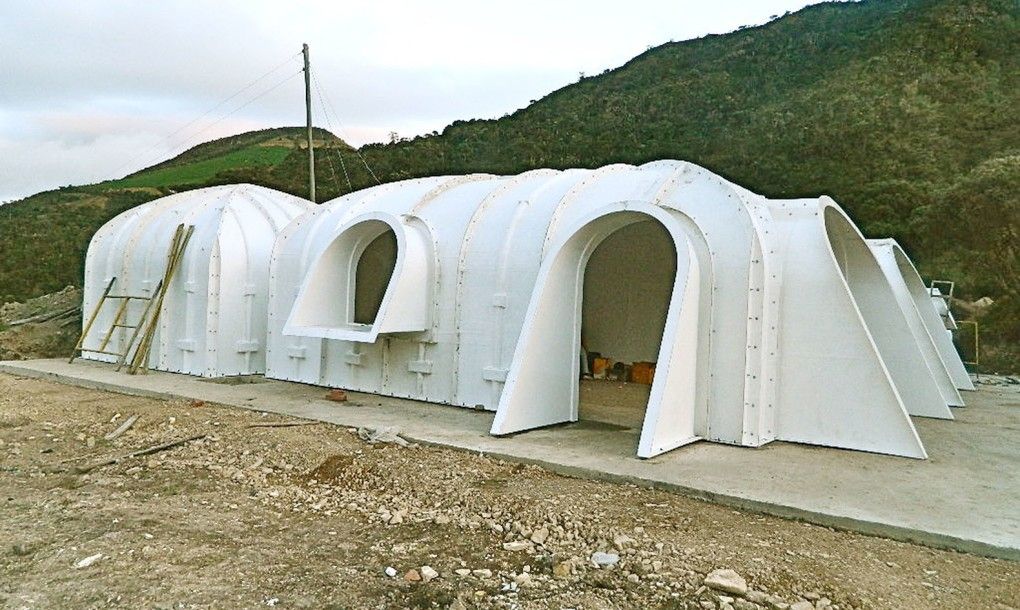

Then, when the construction is done, all that’s left to do is to cover the house in a thin layer of soil. This layer has to be thick enough to plant grass, moss or small plants on it. Because the prefab modules the house is made of are reinforced polymer, this allows them to be waterproof as well as durable and lightweight, thus easy to work with.
Casa Magayon in Costa Rica
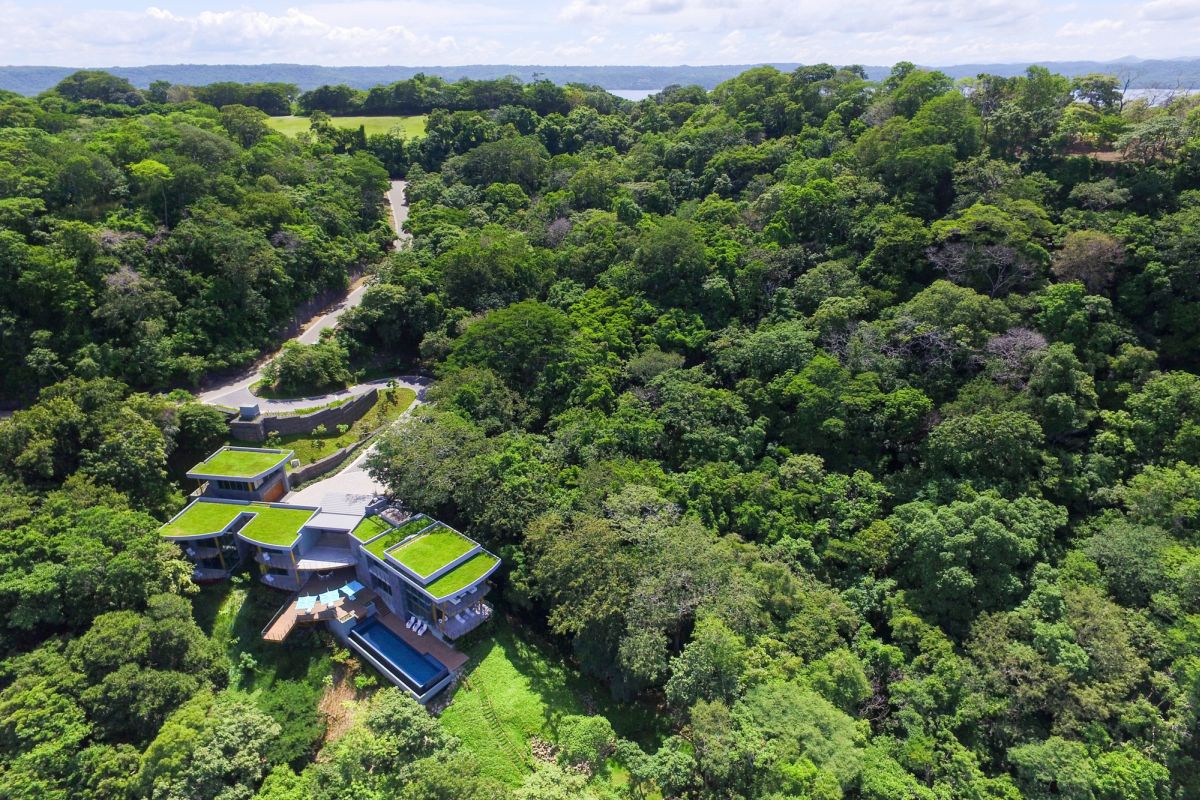
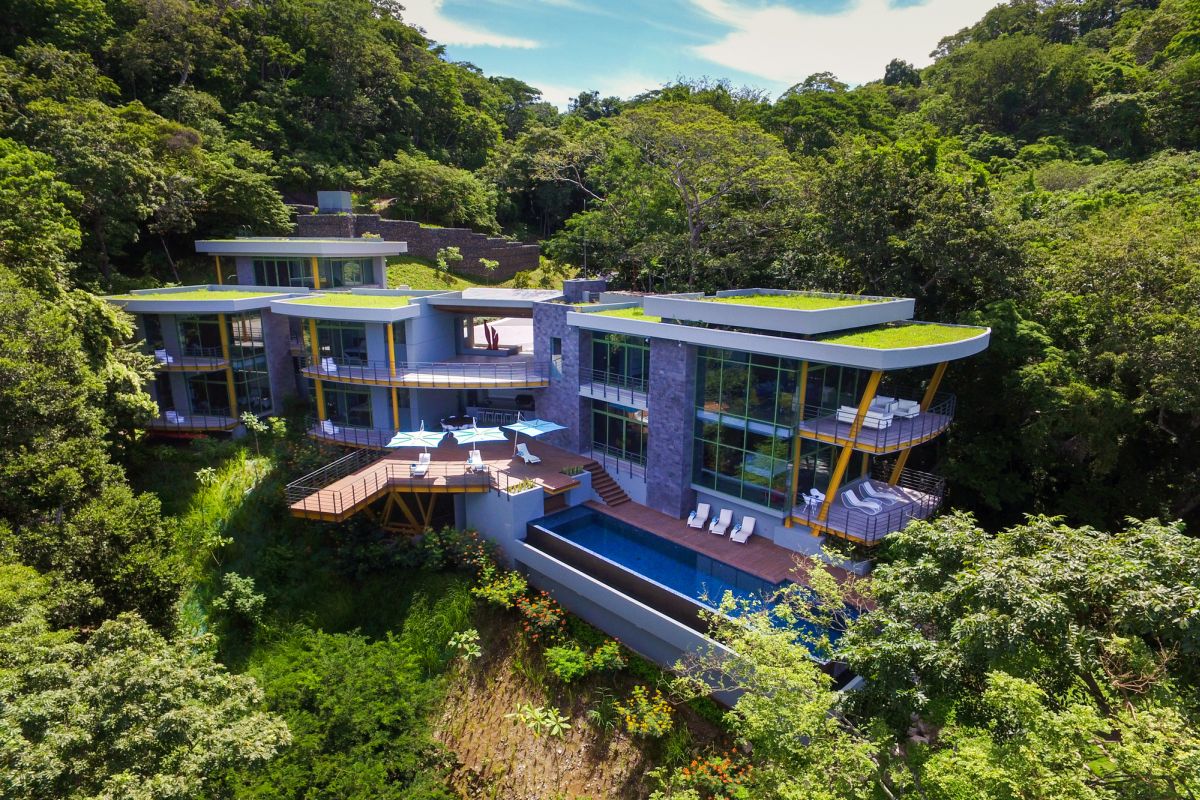
Completed in 2015, Casa Magayon is a modern 1290 square meter residence in the Papagayo Peninsula, in Costa Rica. It was a project by SARCO Architects and was designed to follow the natural shape of the site and to seamlessly integrated into the surroundings. The exterior of the house features glass surfaces and gray stucco walls. Polished concrete floors connect the interior and exterior spaces.
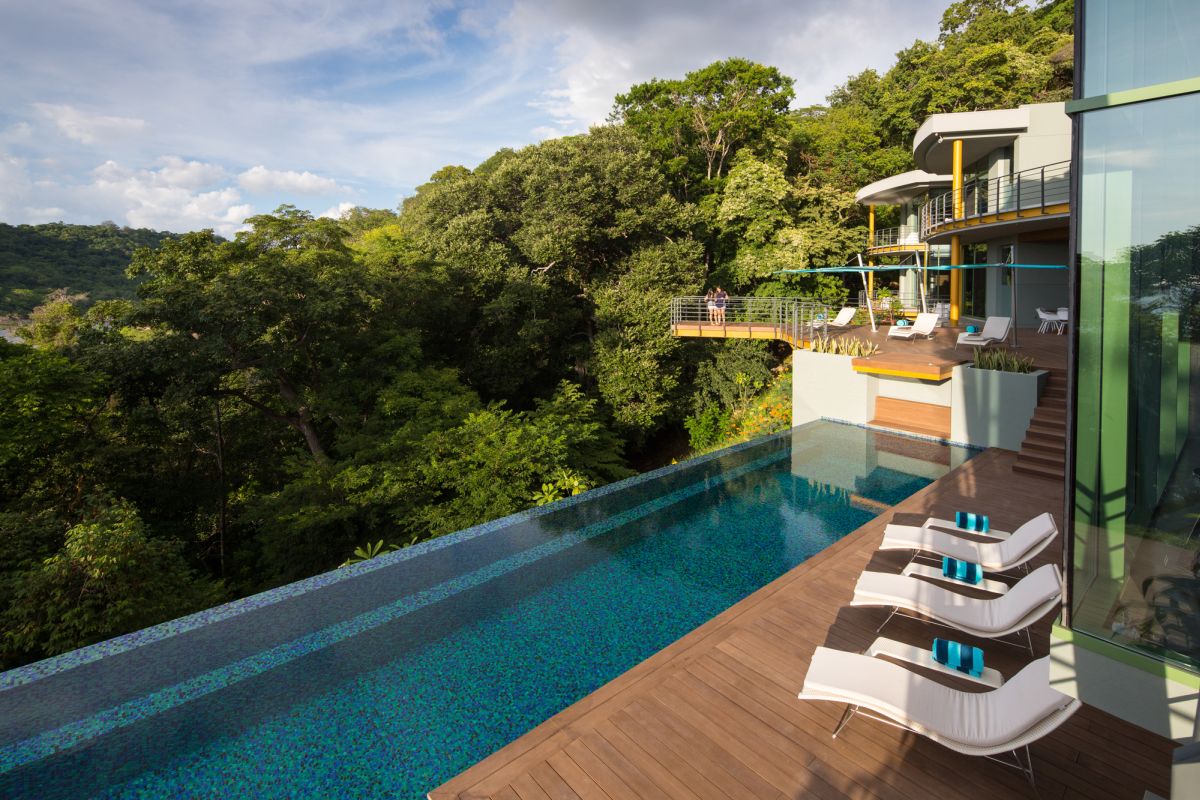
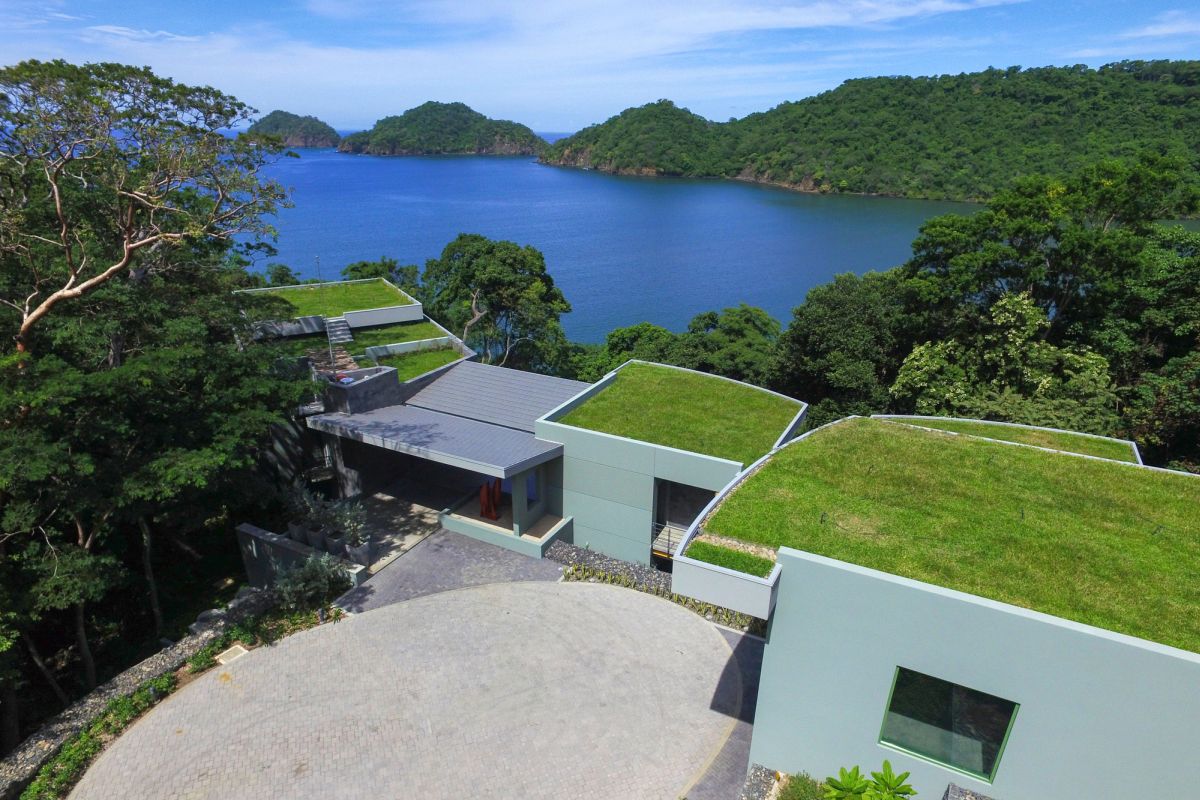
The green roof is a defining feature for the project. It allows the house to blend in, becoming a natural part of the surroundings. When seen from above, the image is harmonious. Moreover, the expansive full height windows and glass walls bring all this beauty inside the residence as well.
Vacation cottage in Iceland
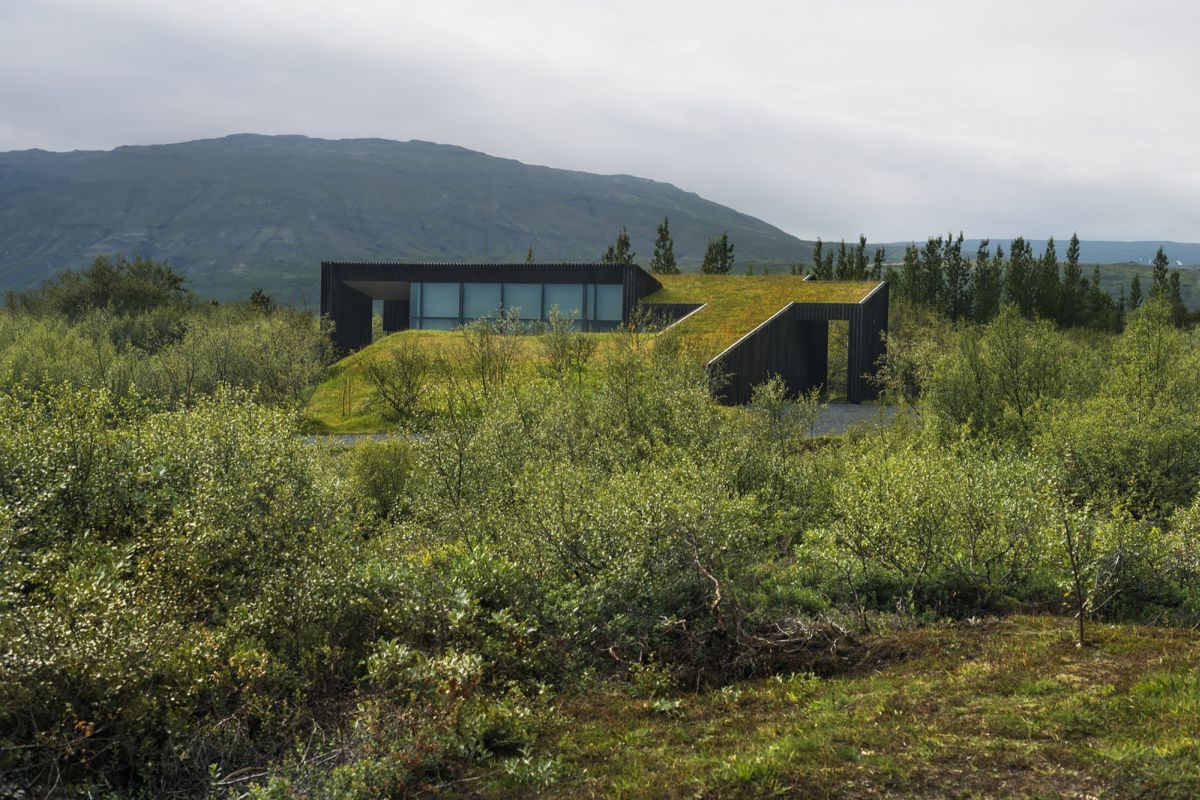
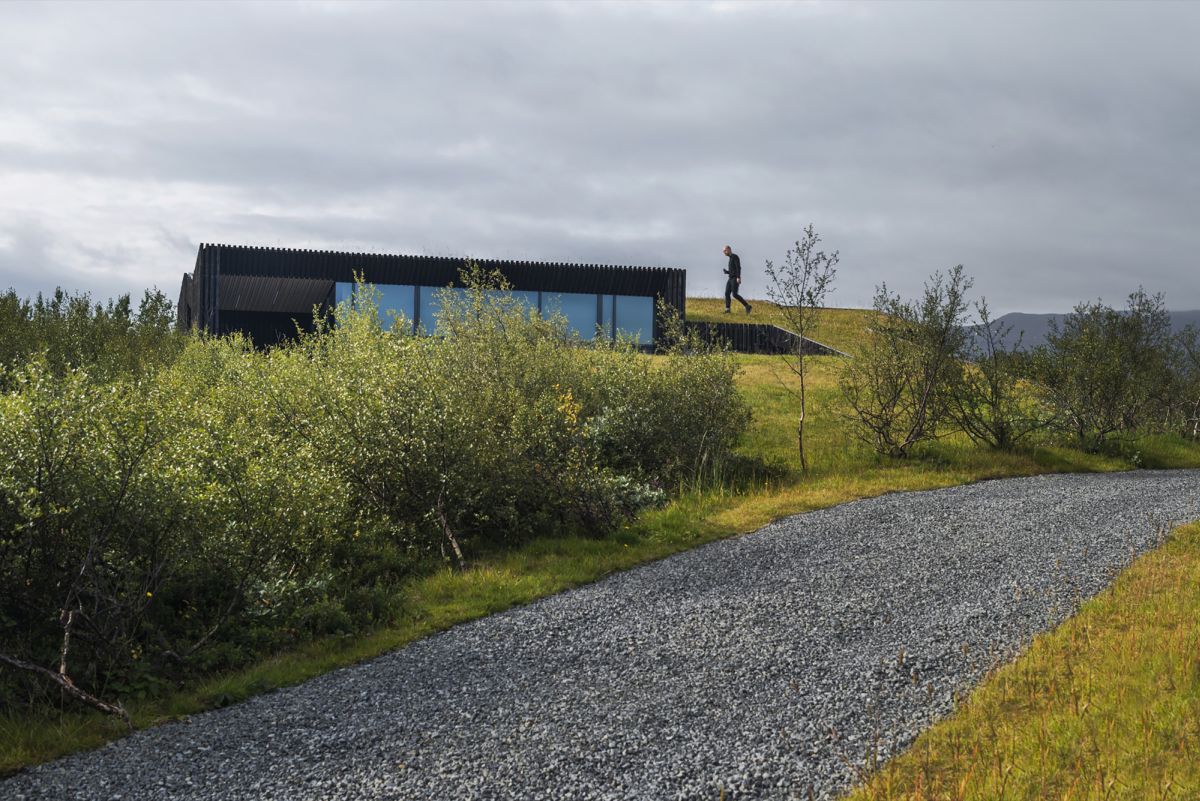
The beautiful green landscape of Iceland makes this area of the globe a dream location for vacation and holiday homes. This particular house was built as part of a competition in 2012. it was designed by PK Arkitekter who decided to use leftover soil from the excavation on the site to create a shell around the cottage.
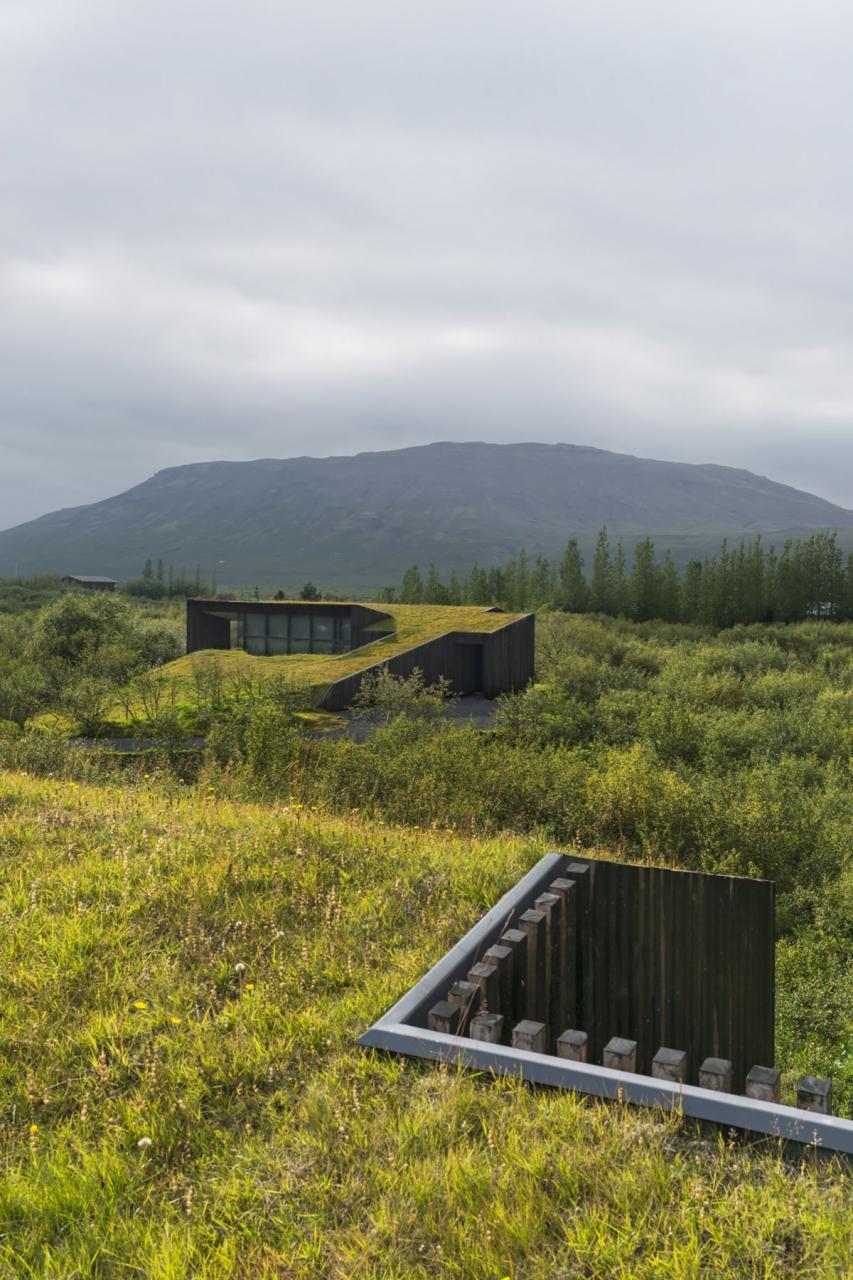
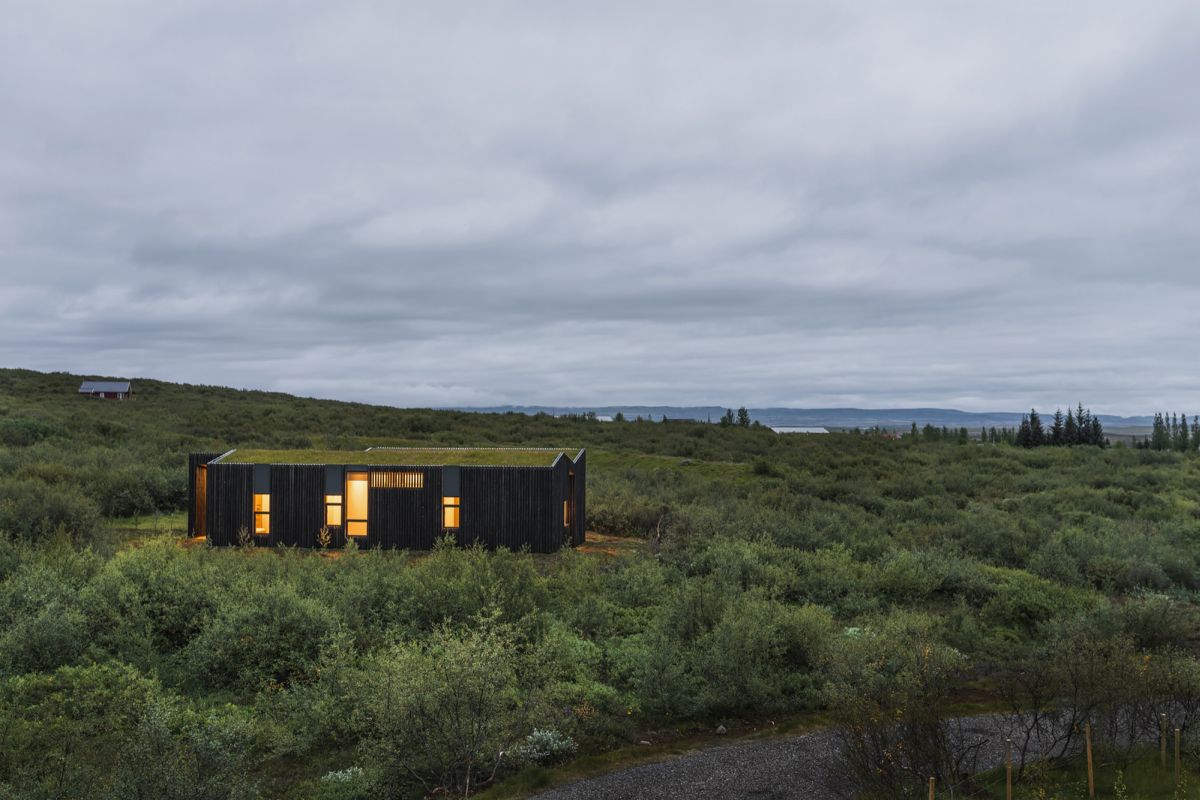

This natural shell allows the building to disappear into the site. The second great feature which has a similar role is the green roof. These two elements combined help the cottage blend in. the team also added a series of other green features meant to make the structure as pleasant as possible from all perspectives.
Villa K in Germany
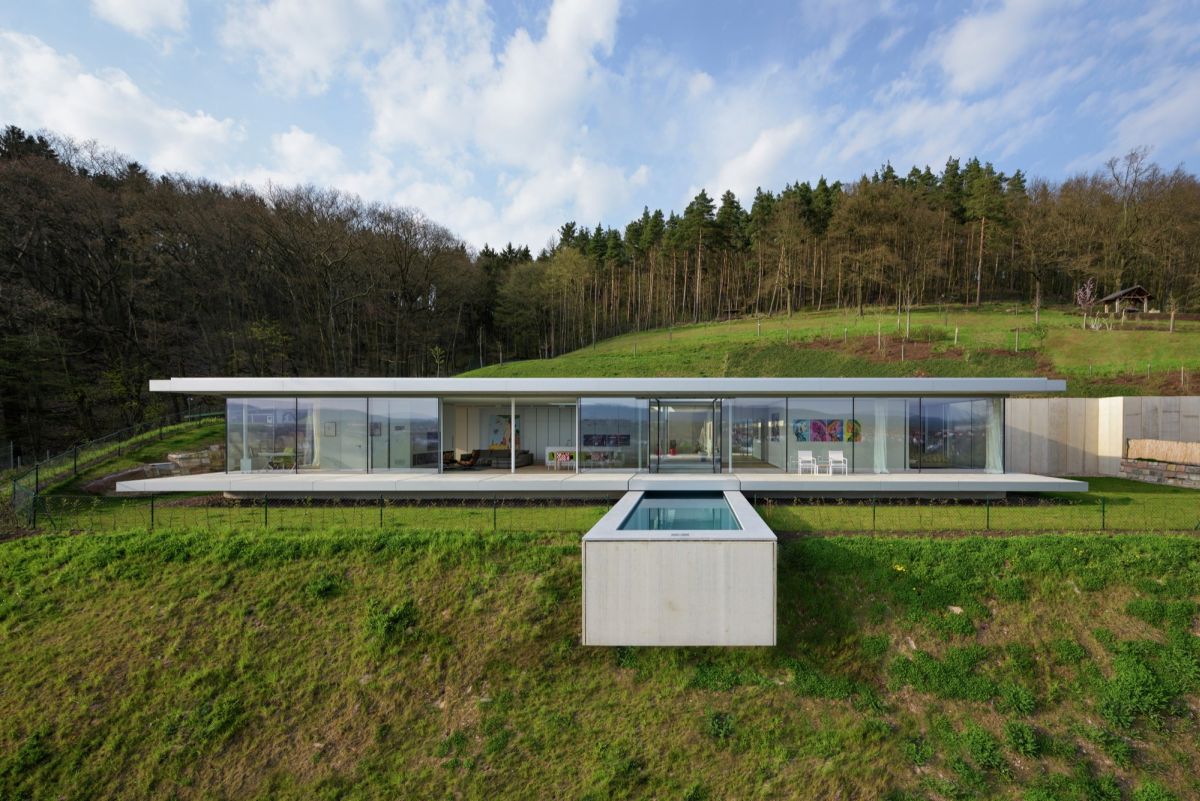
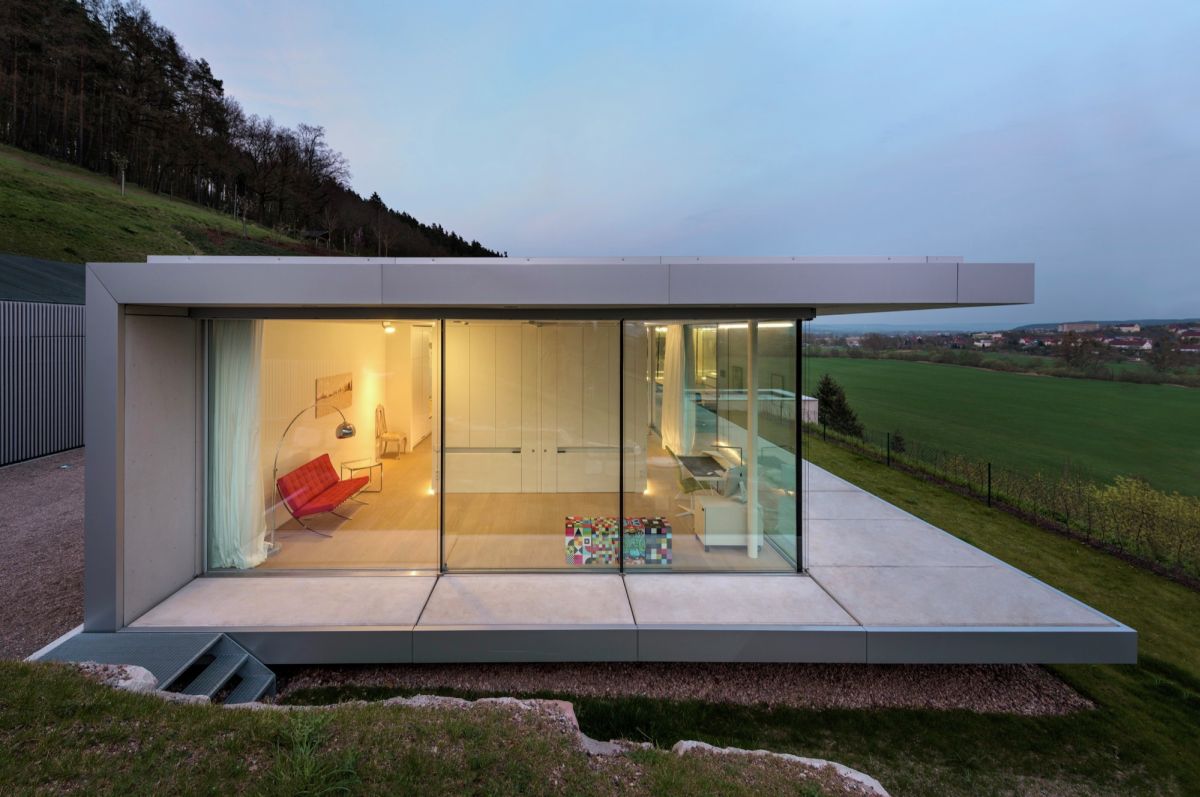 Home
Home
